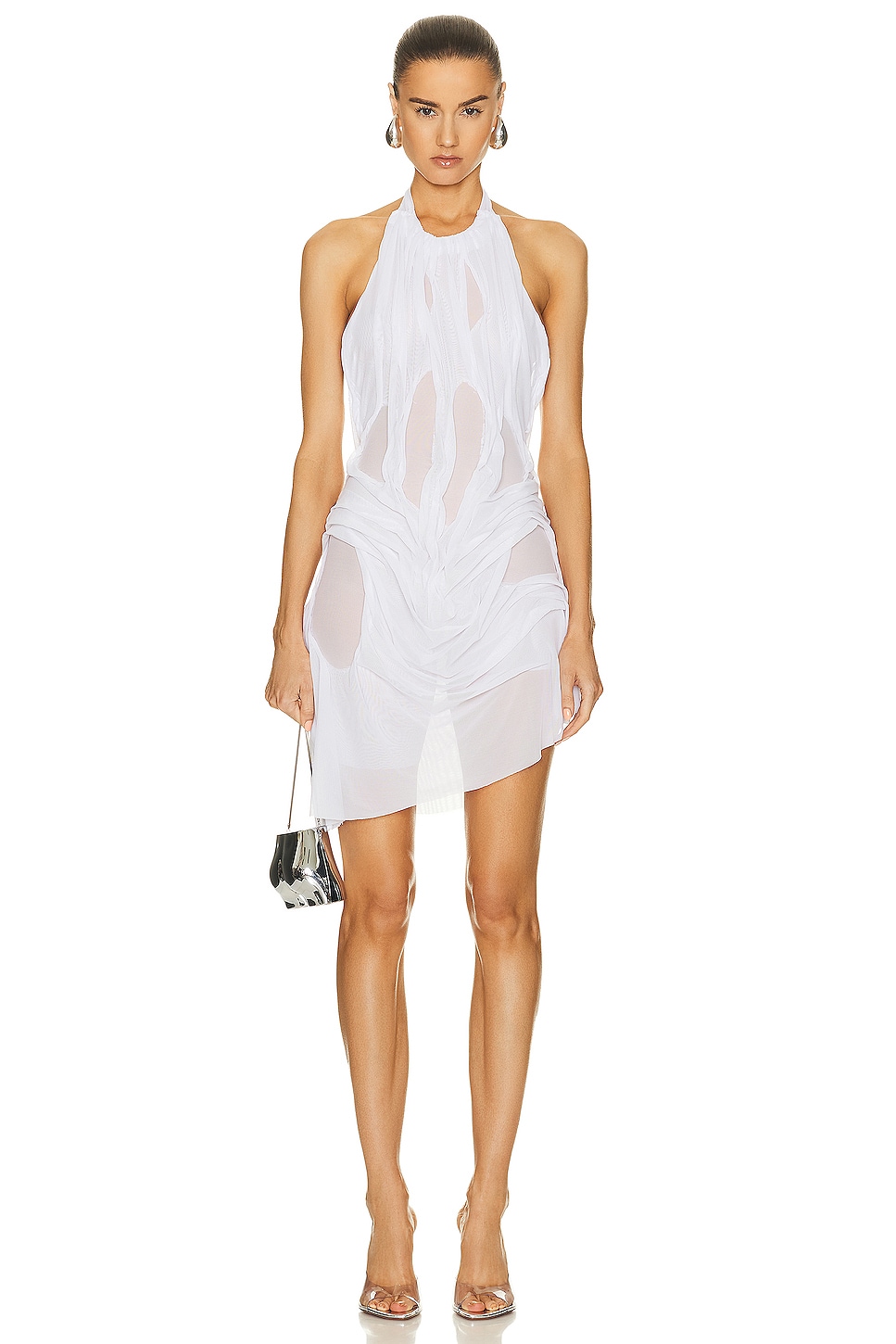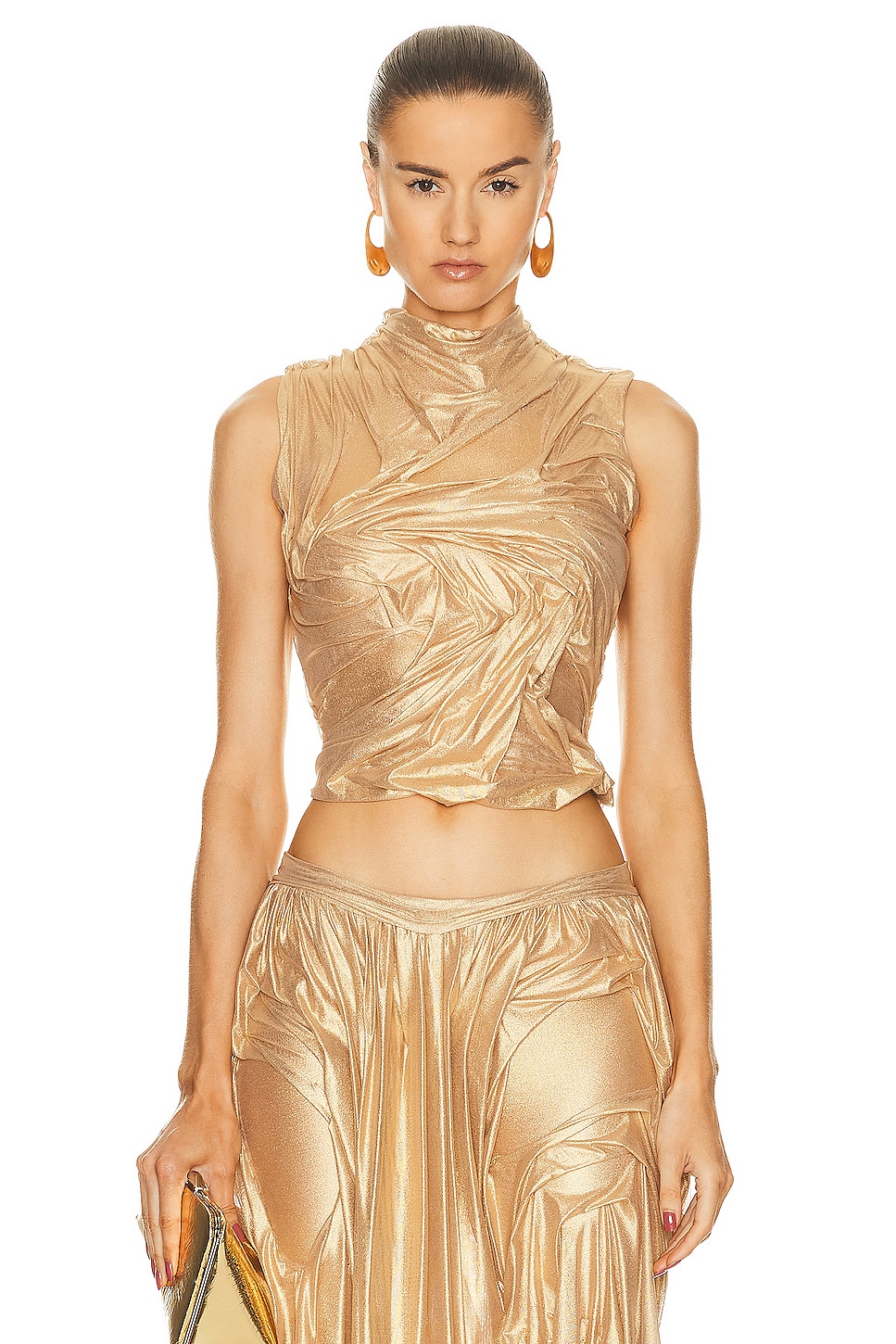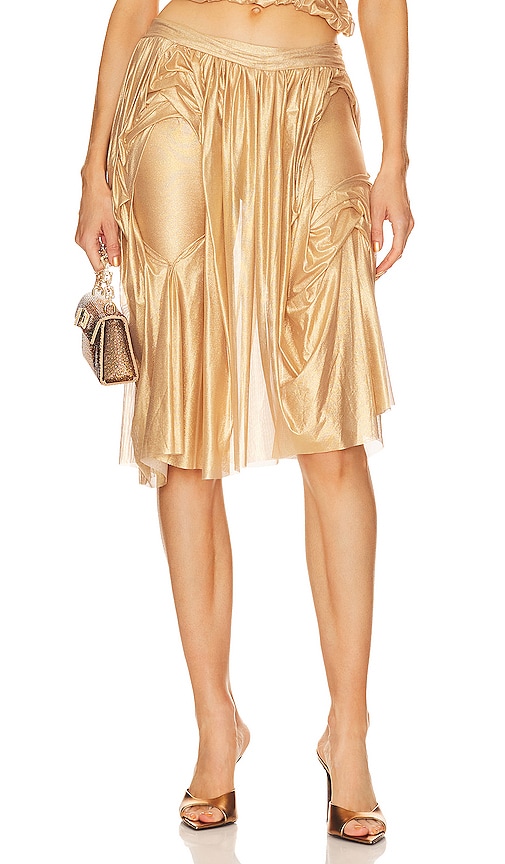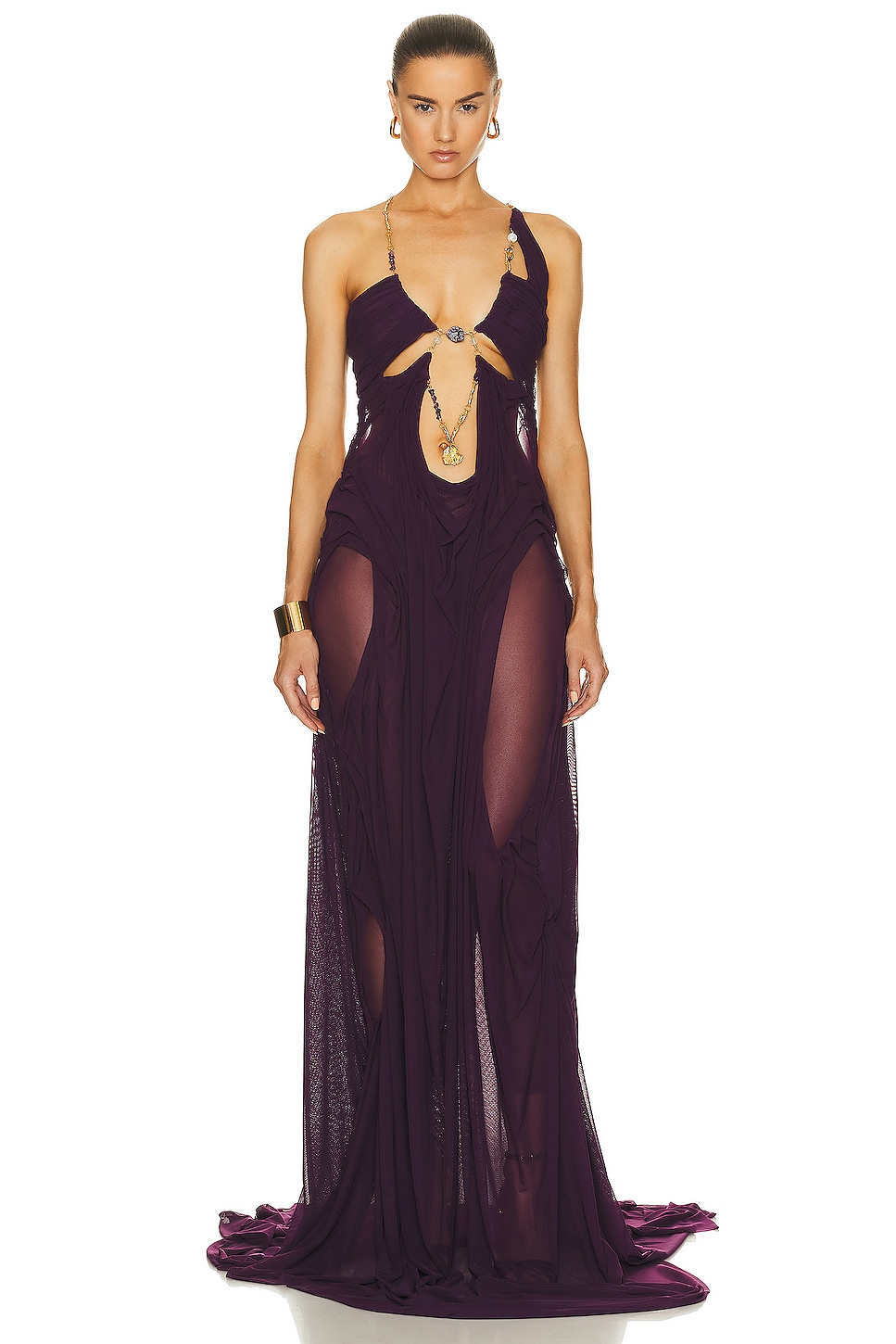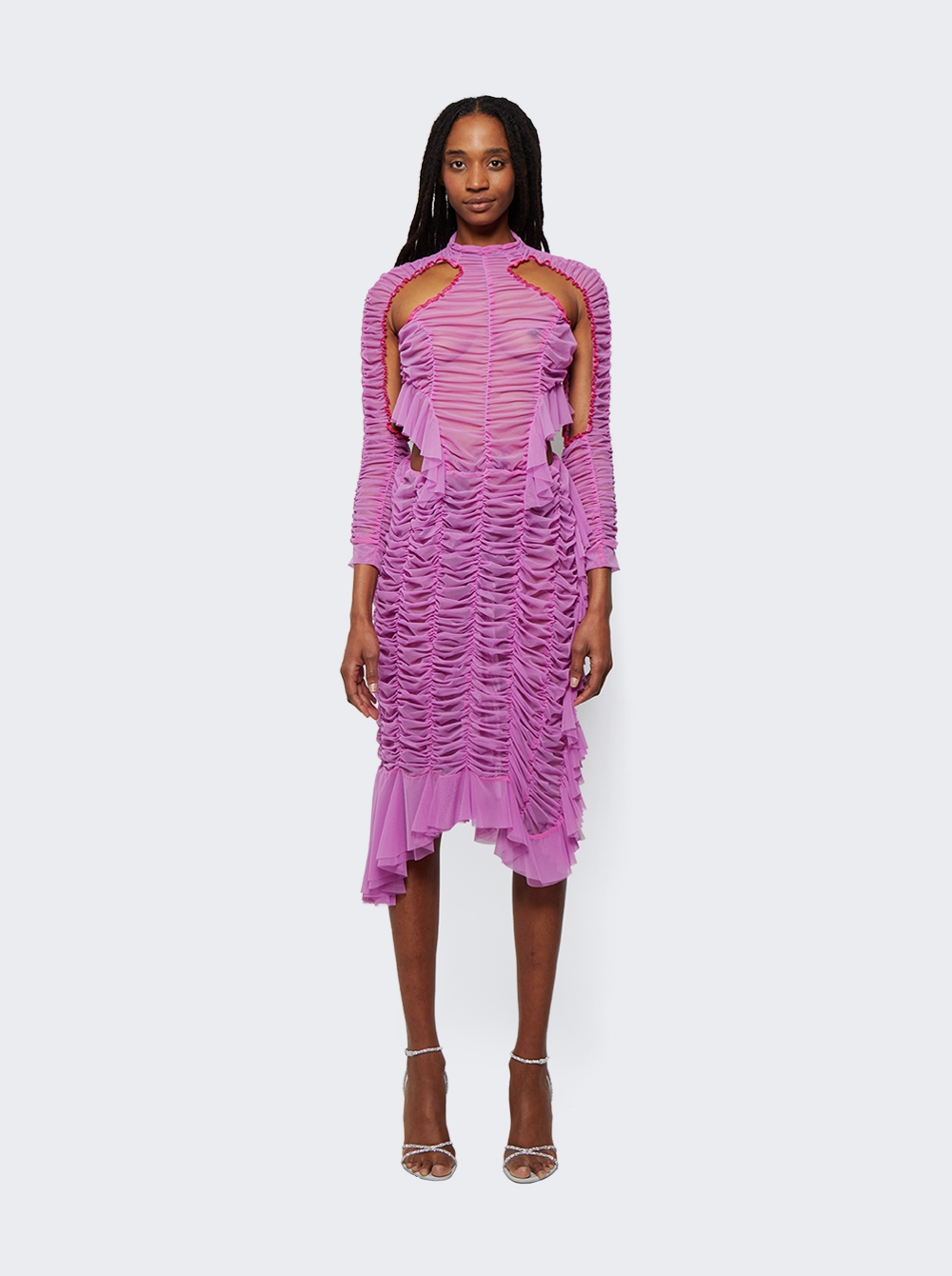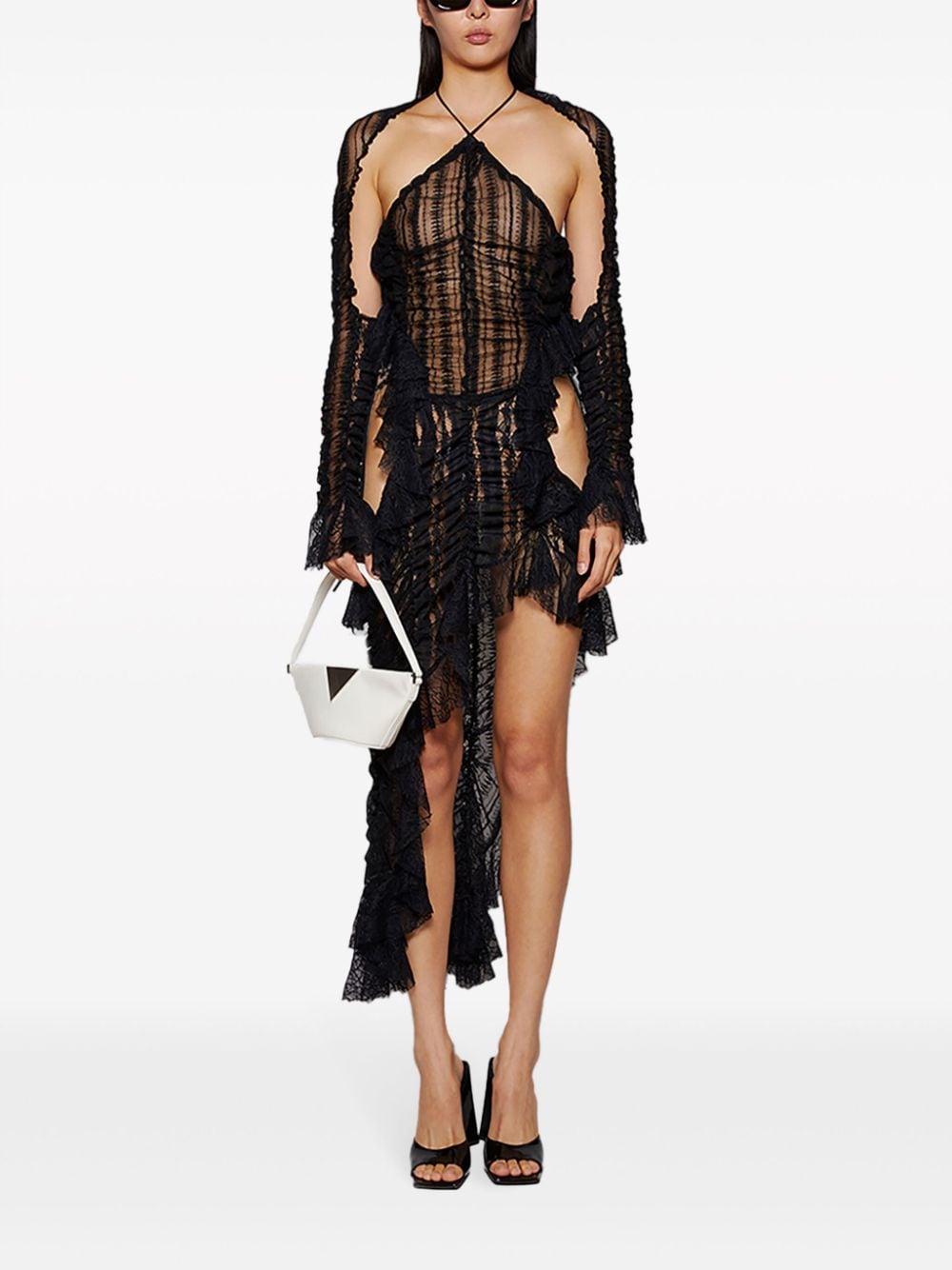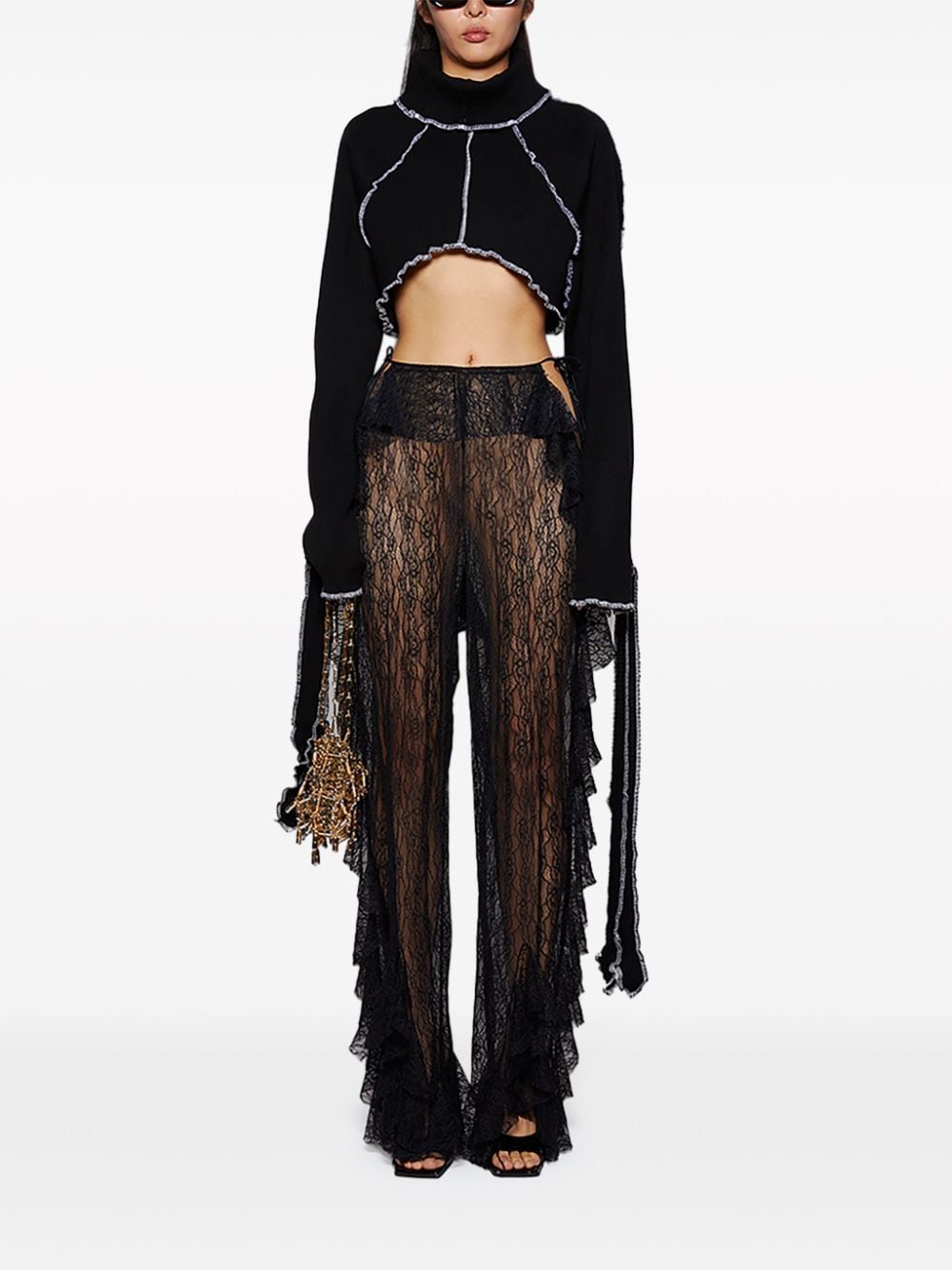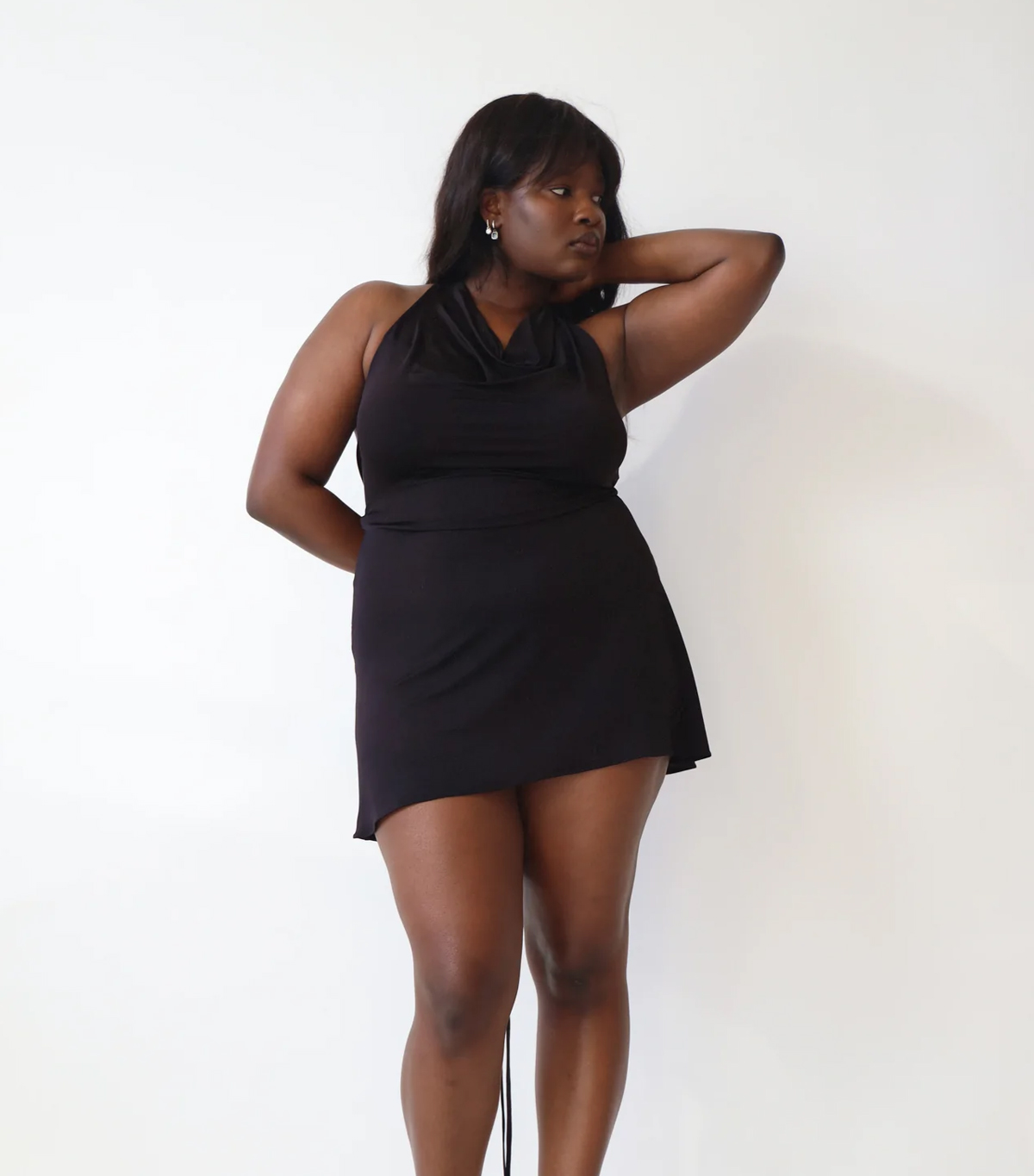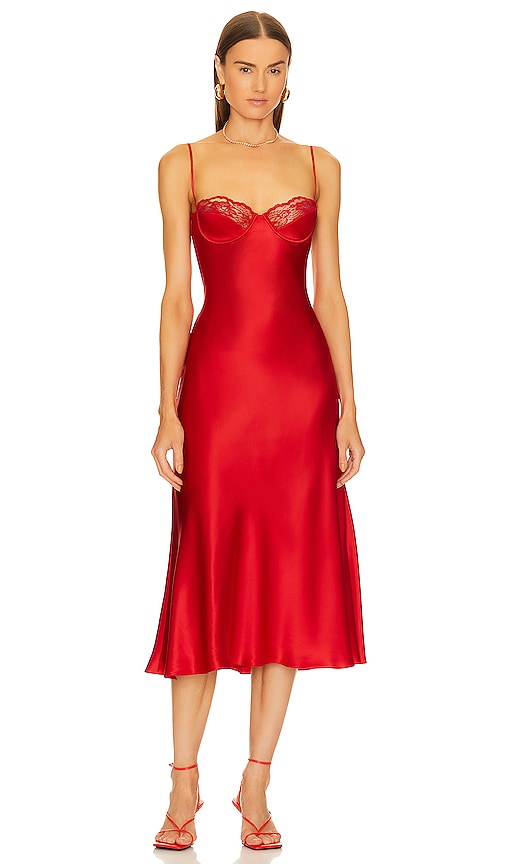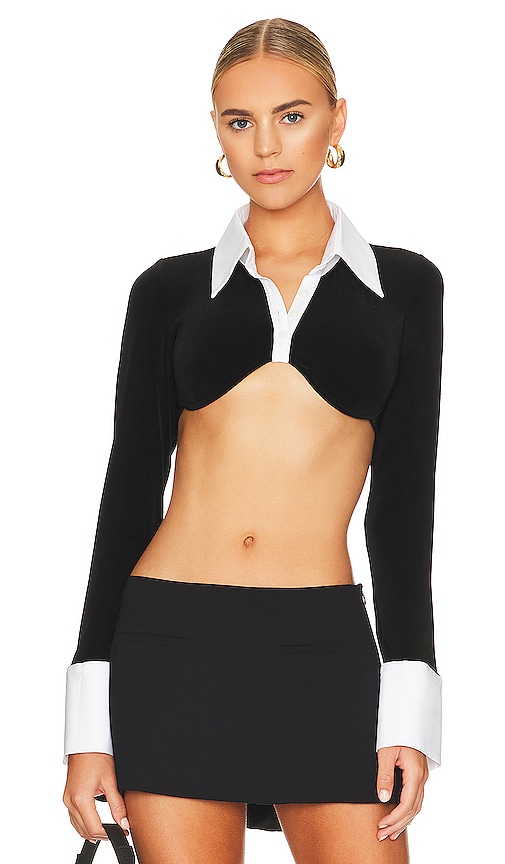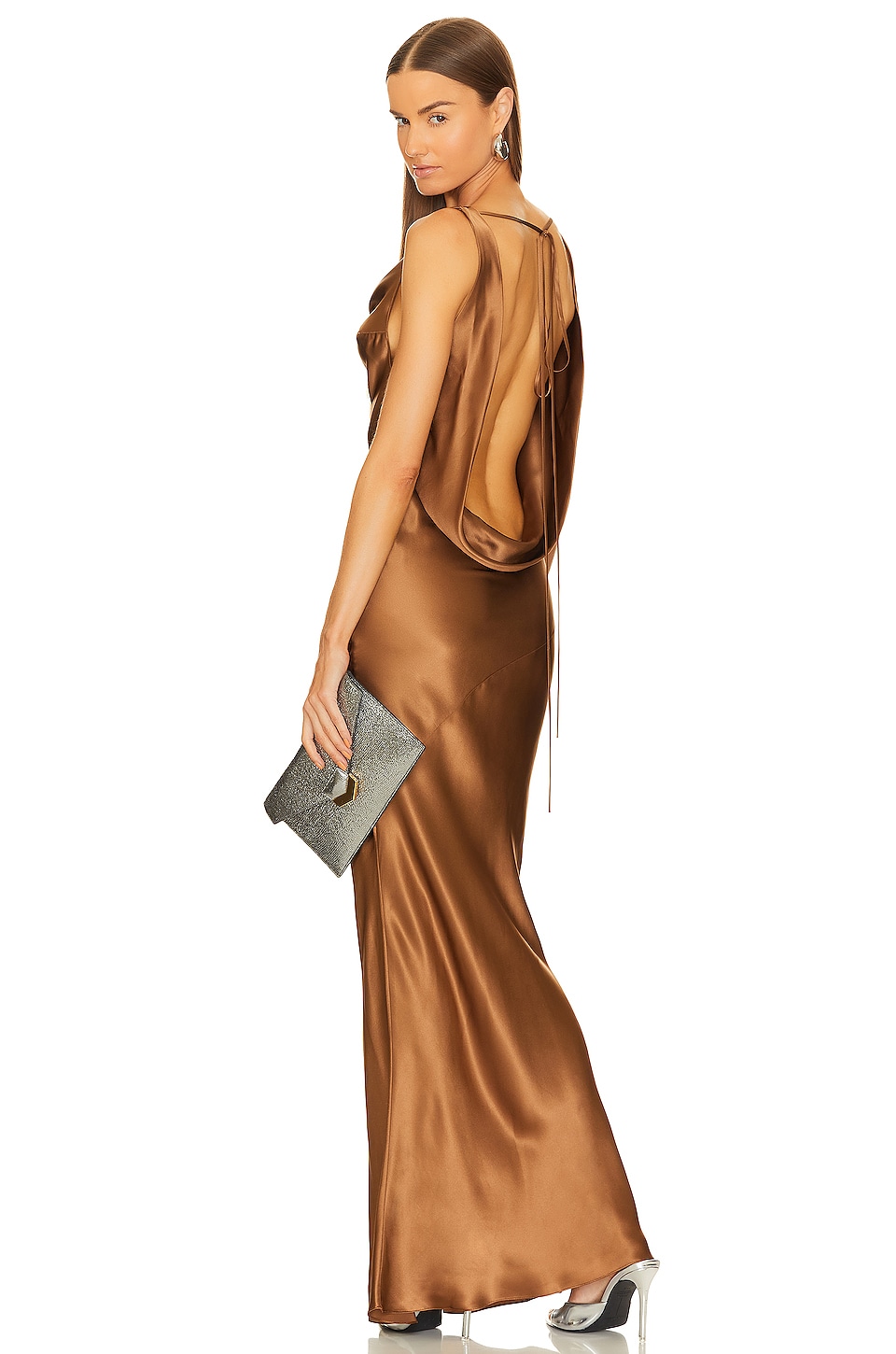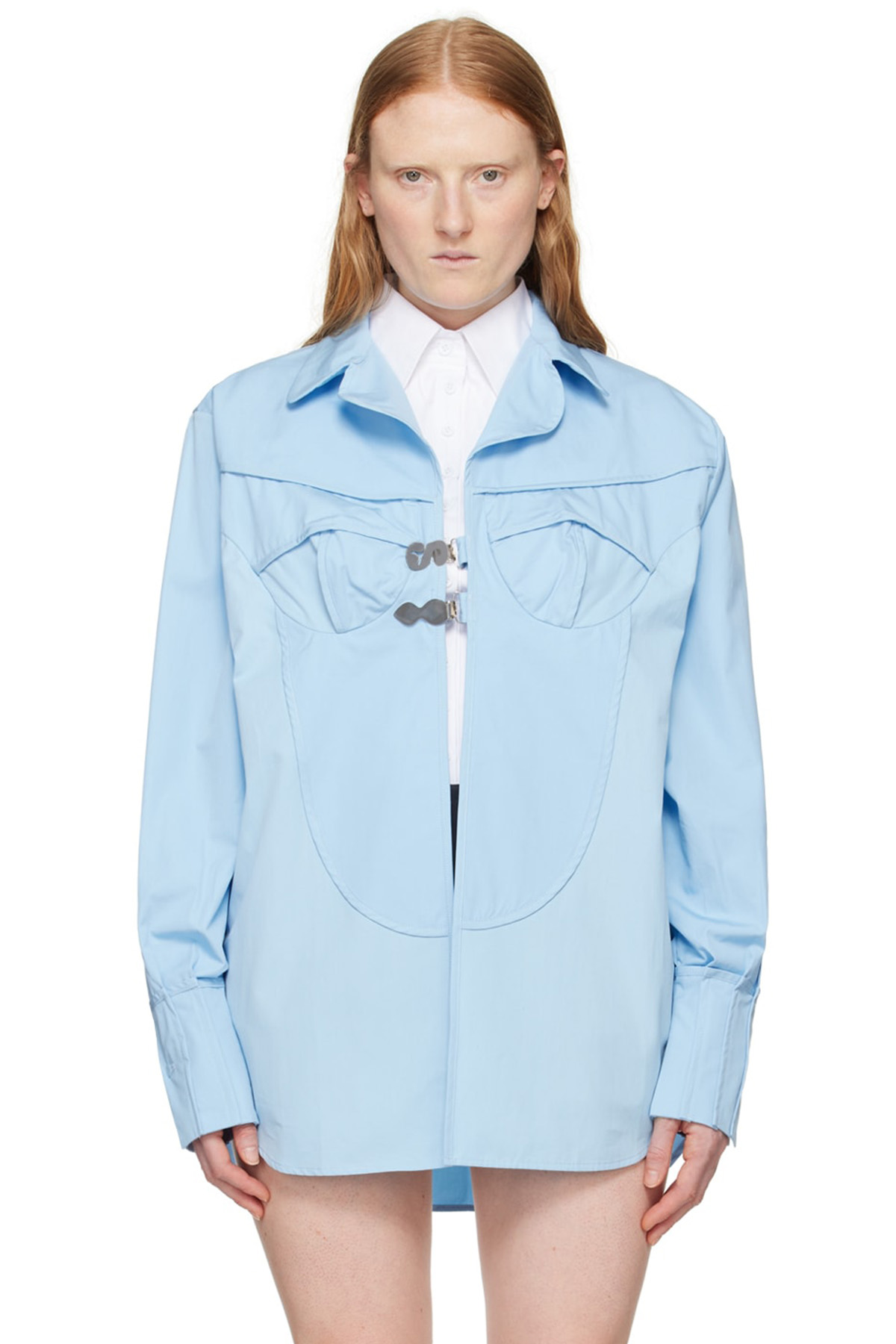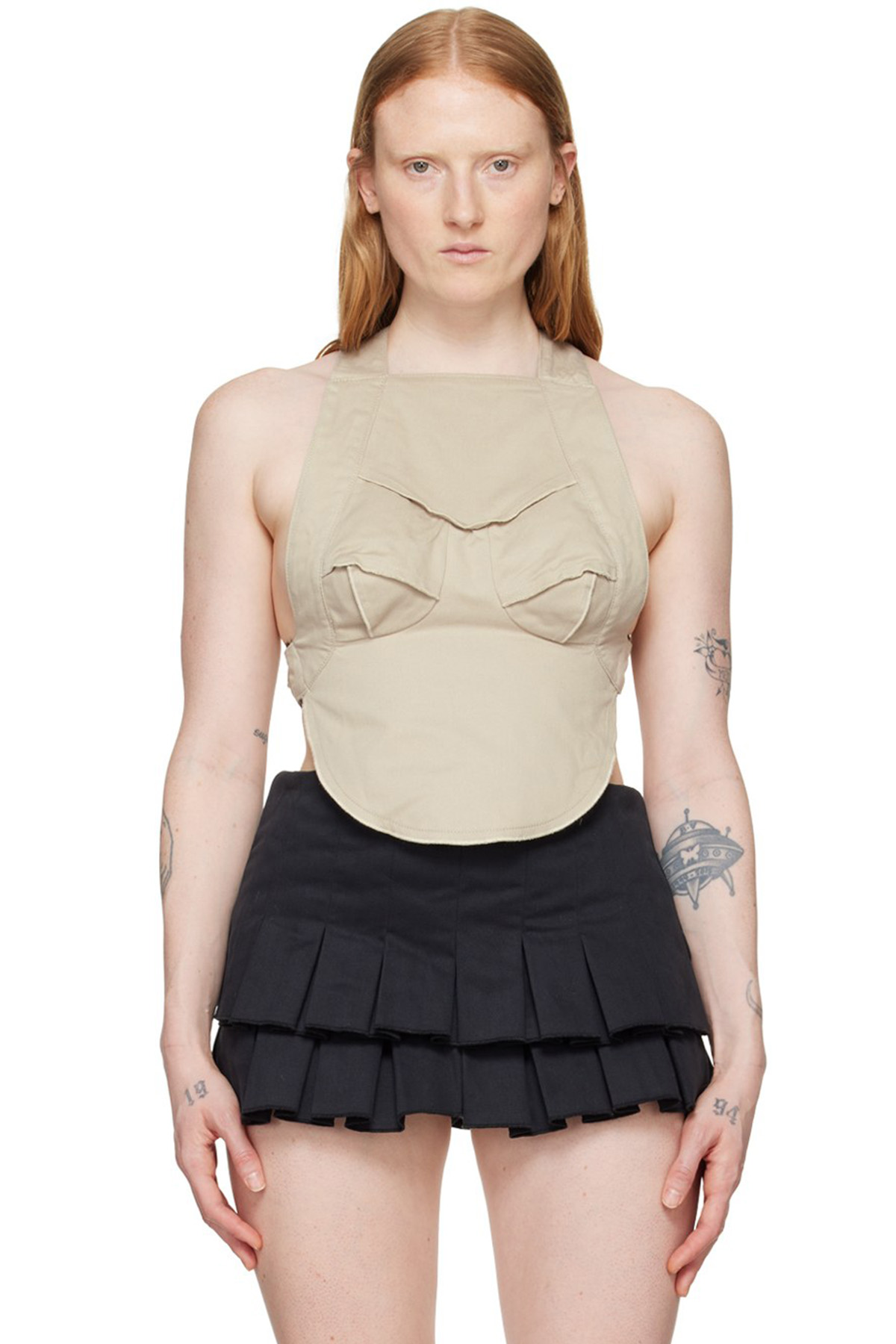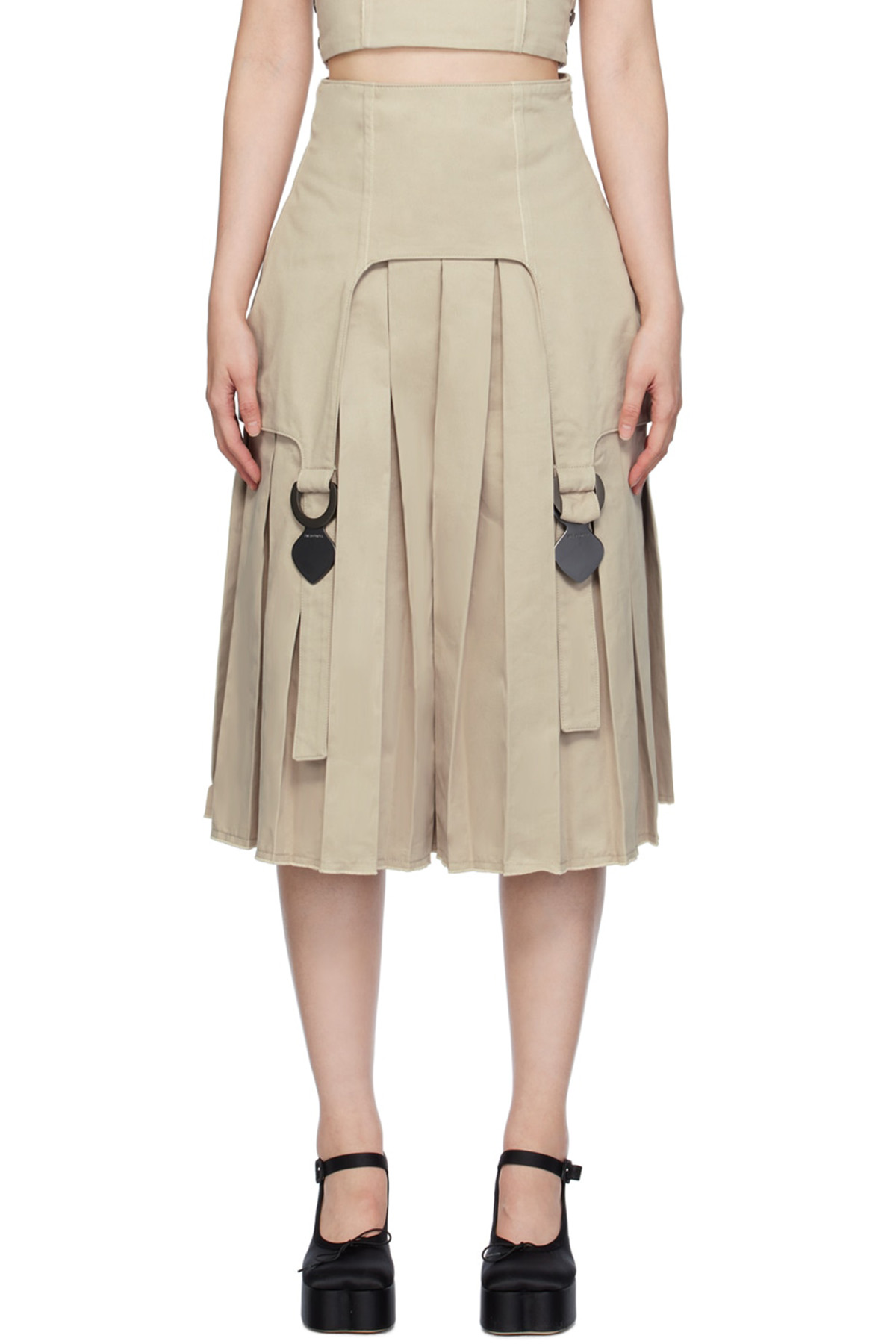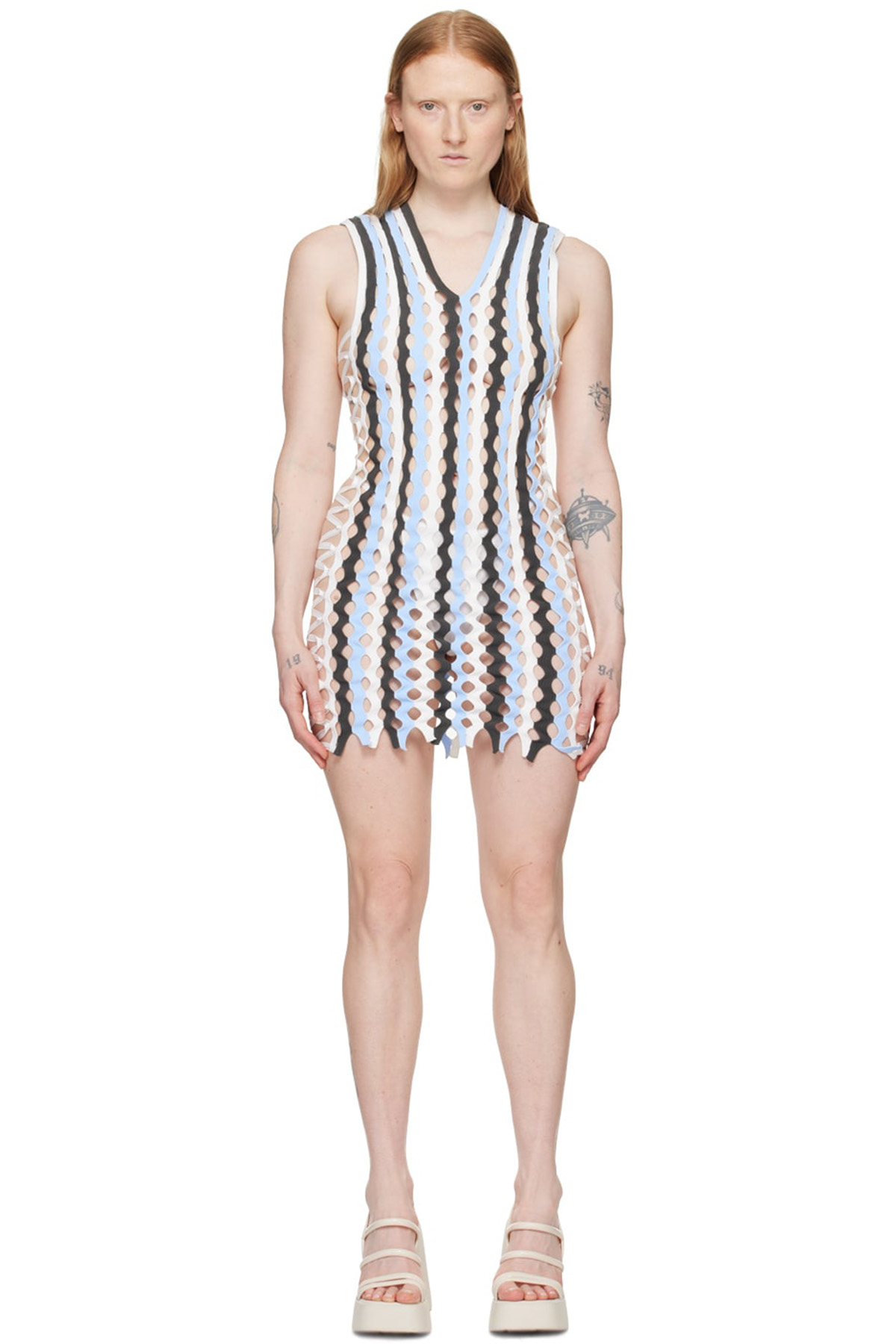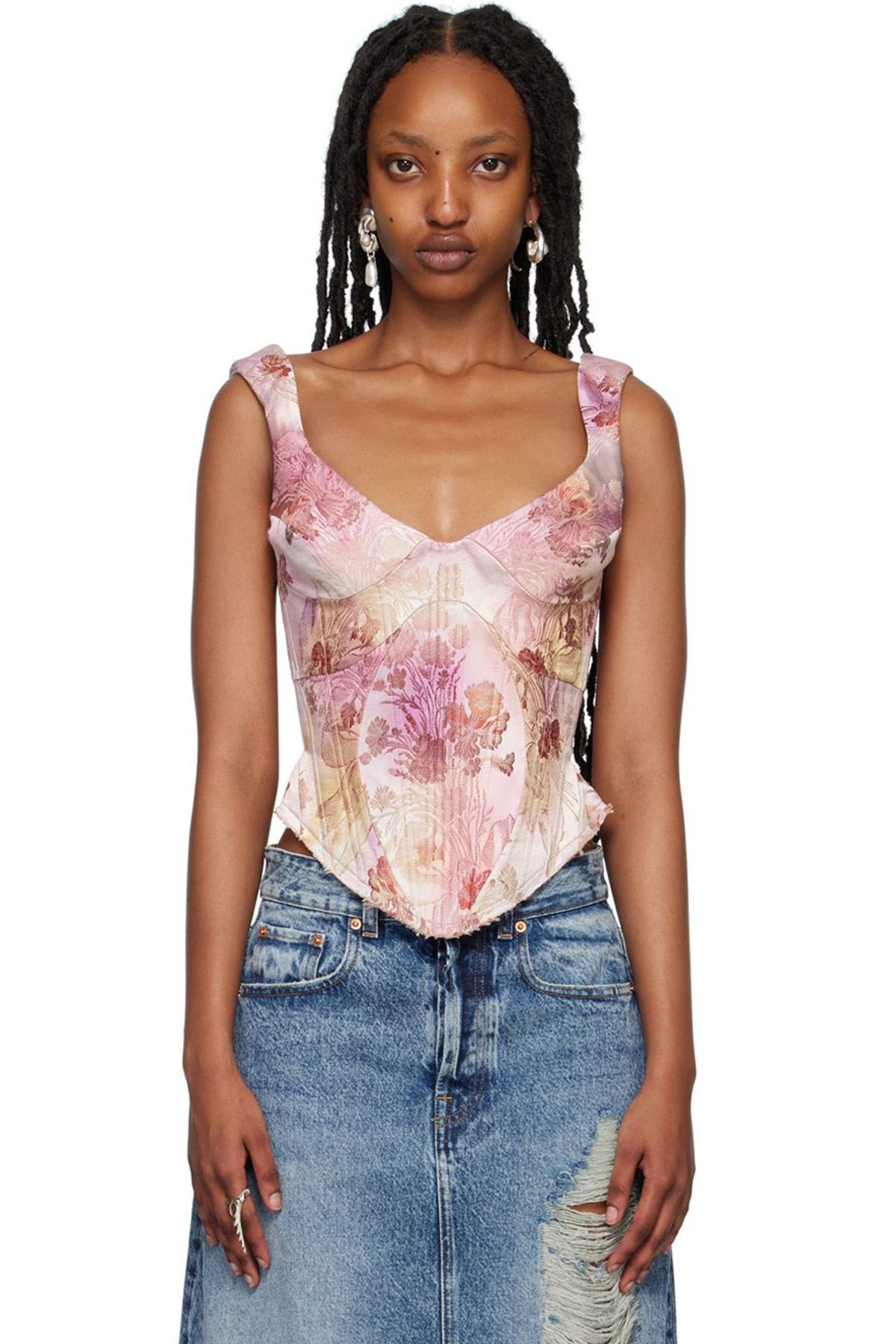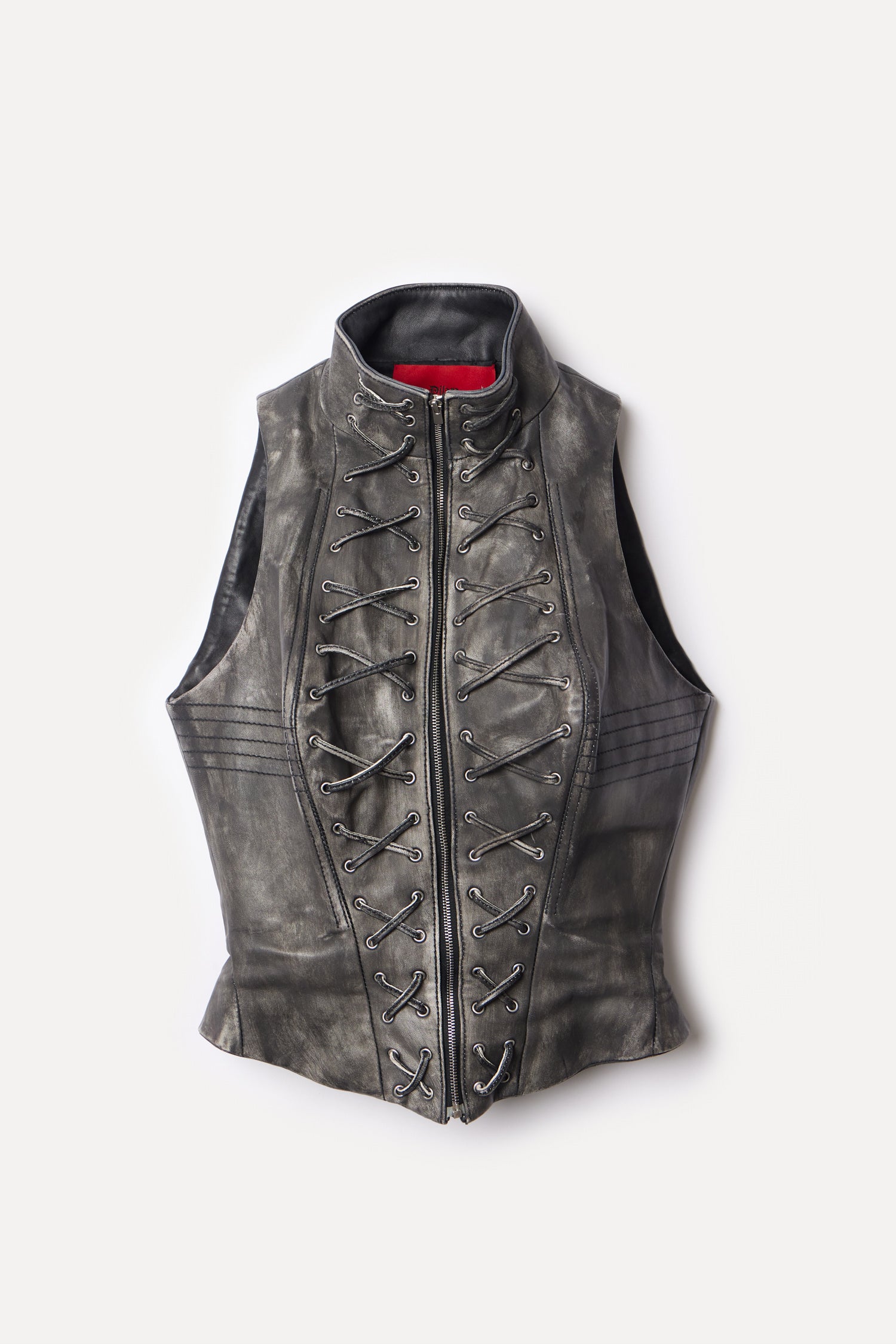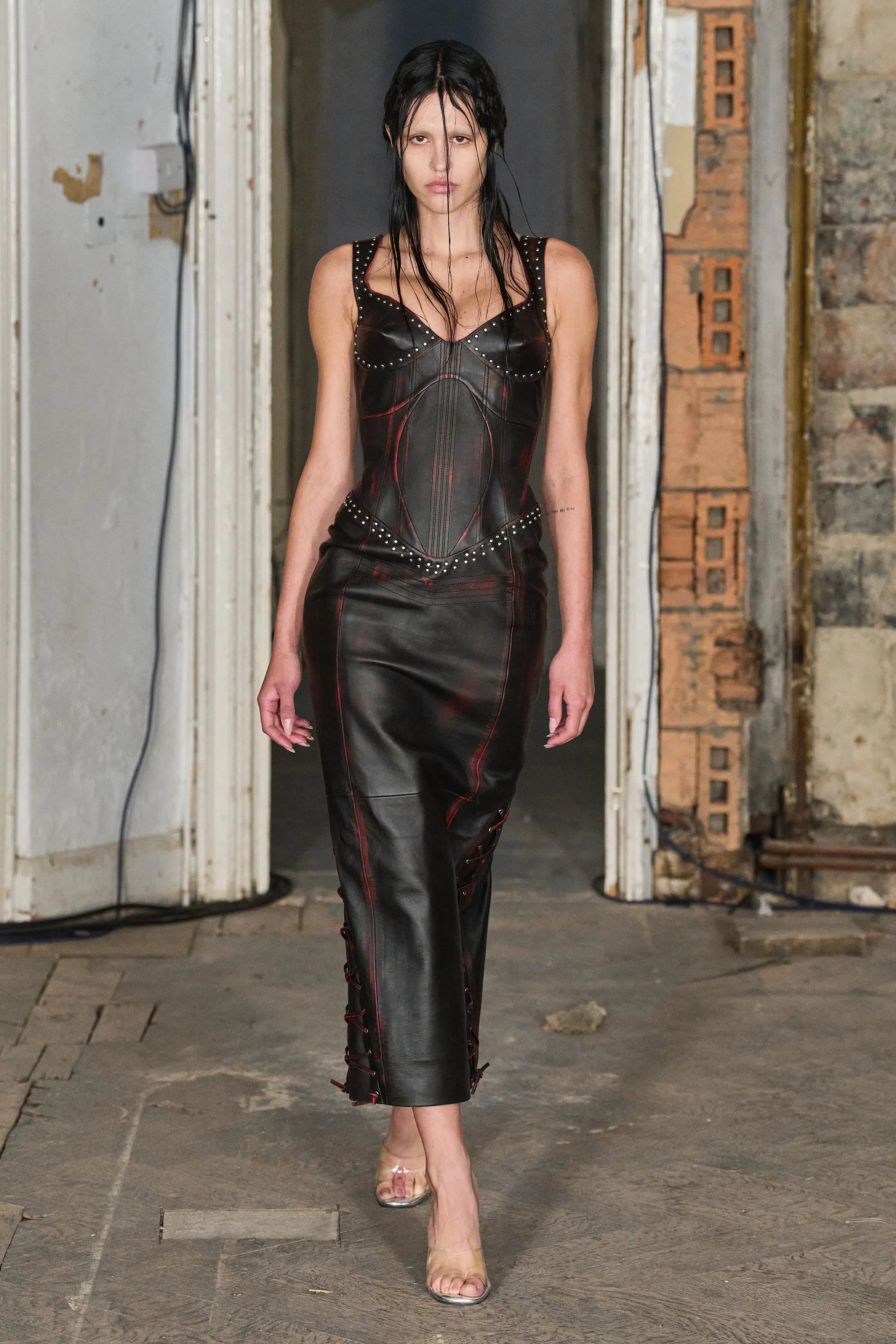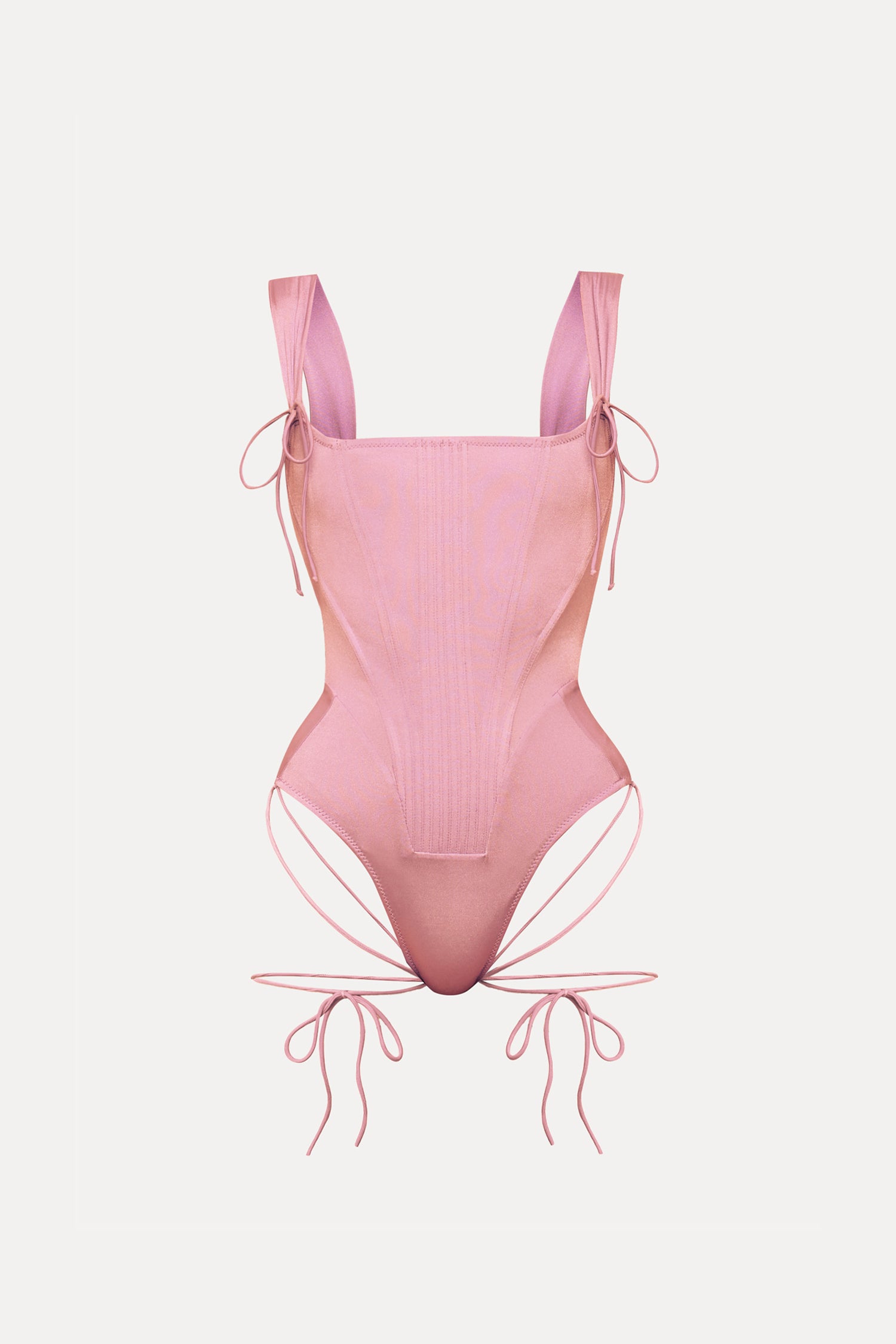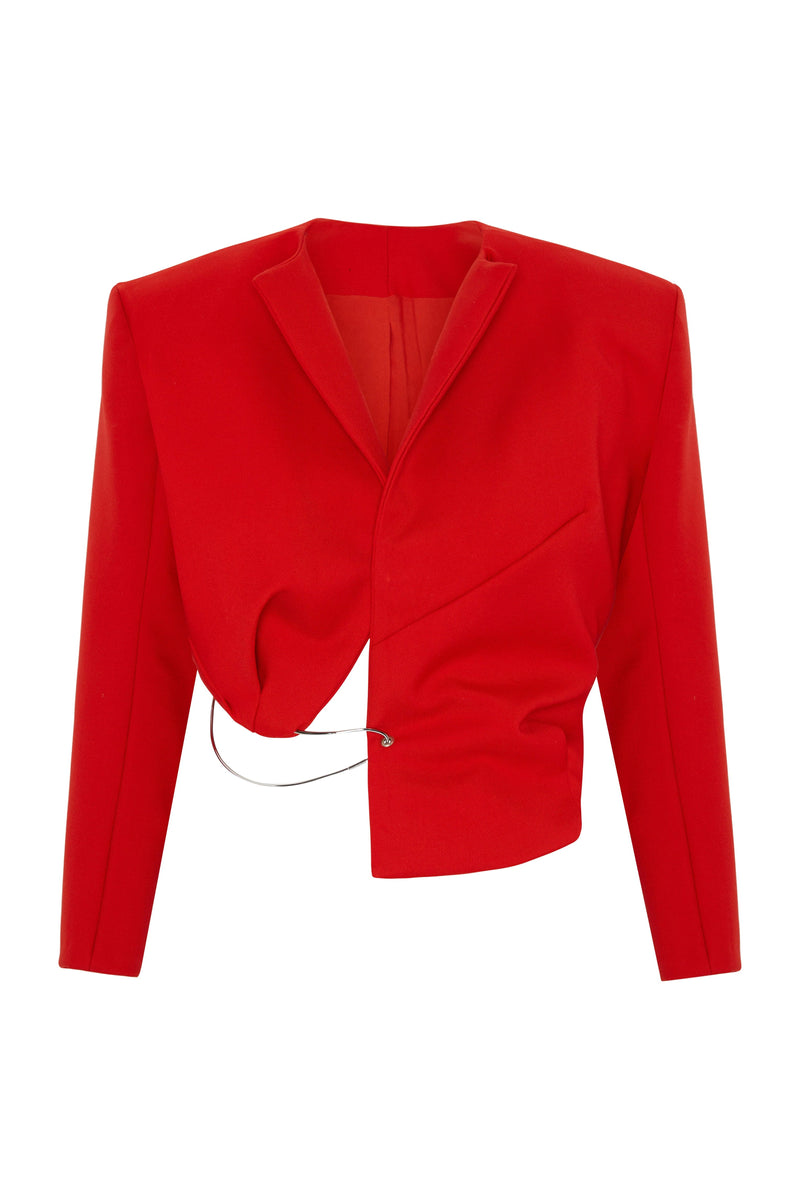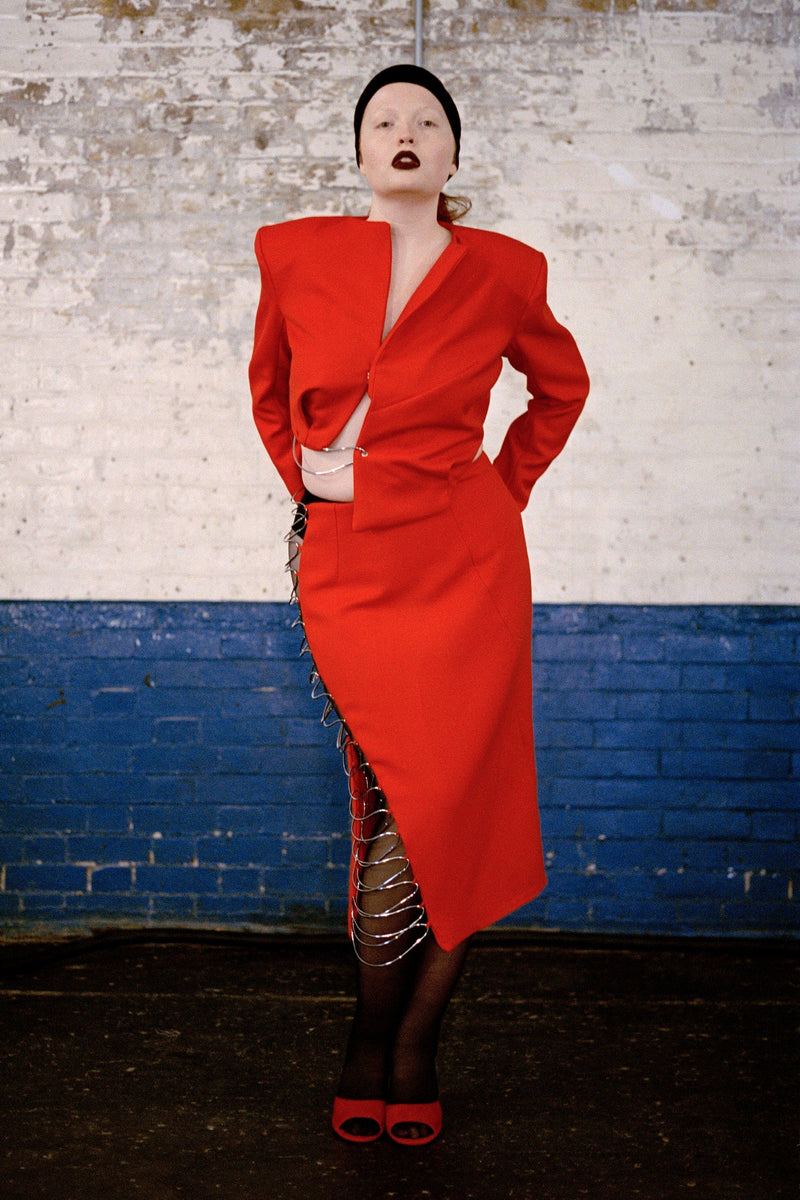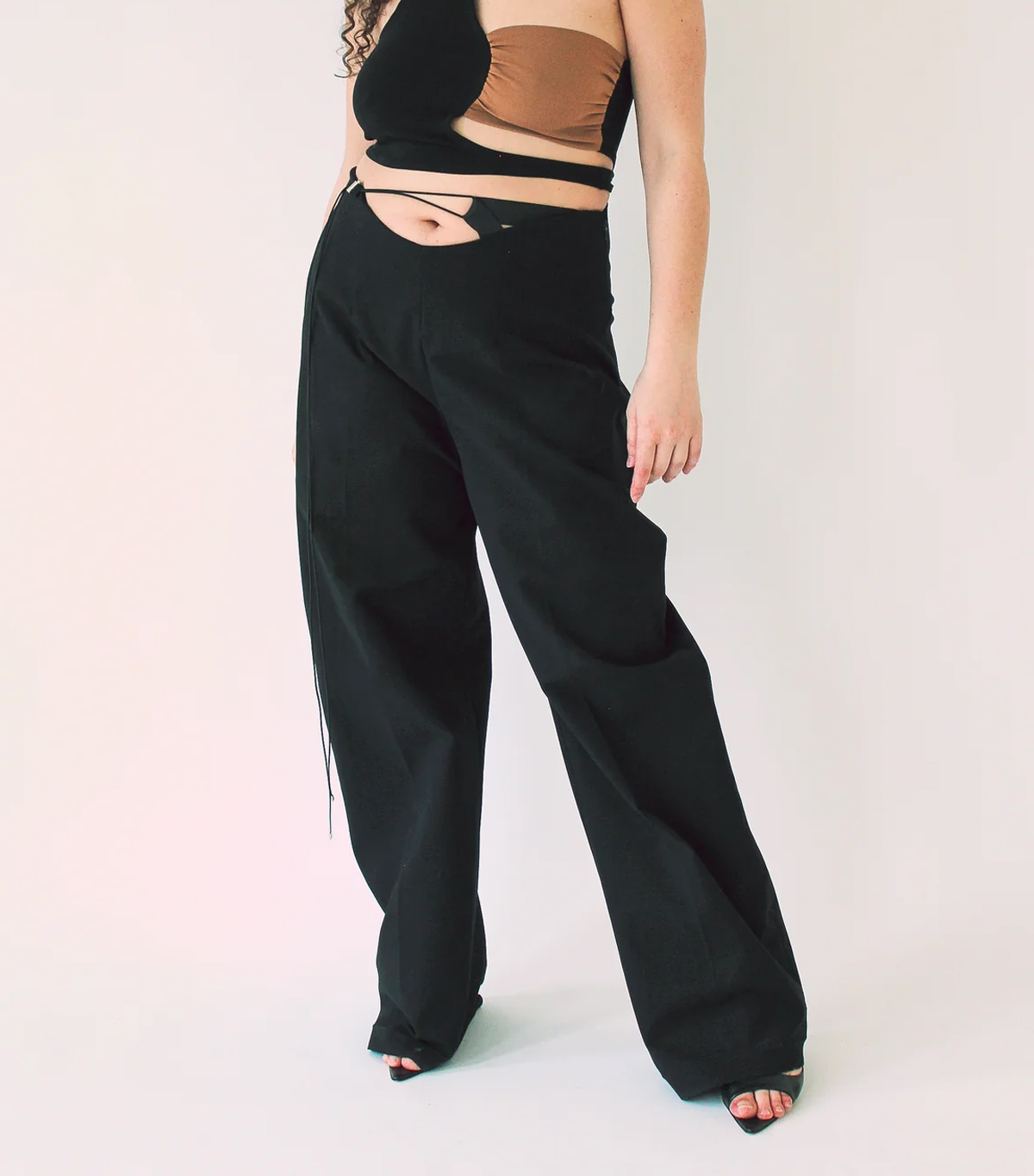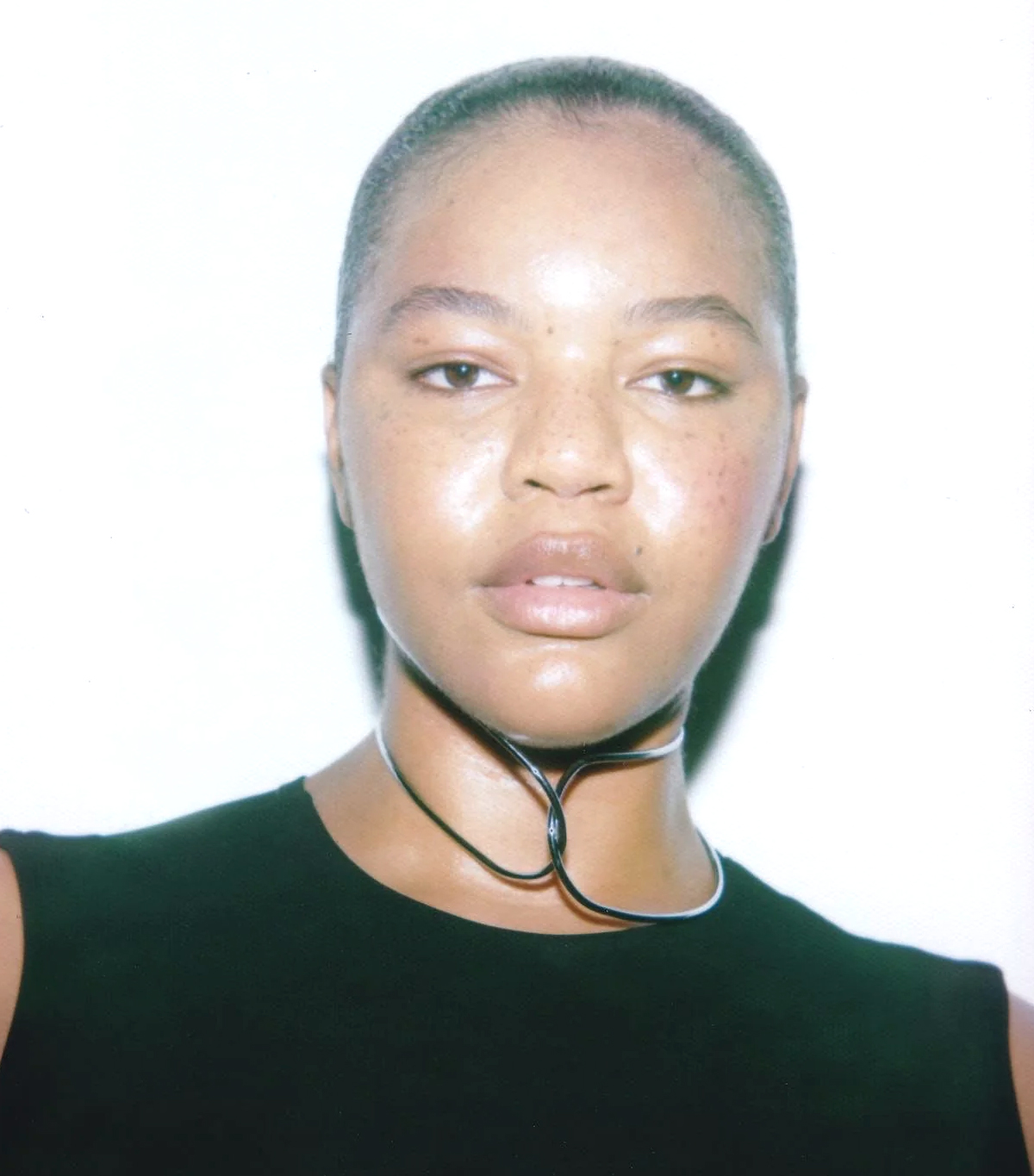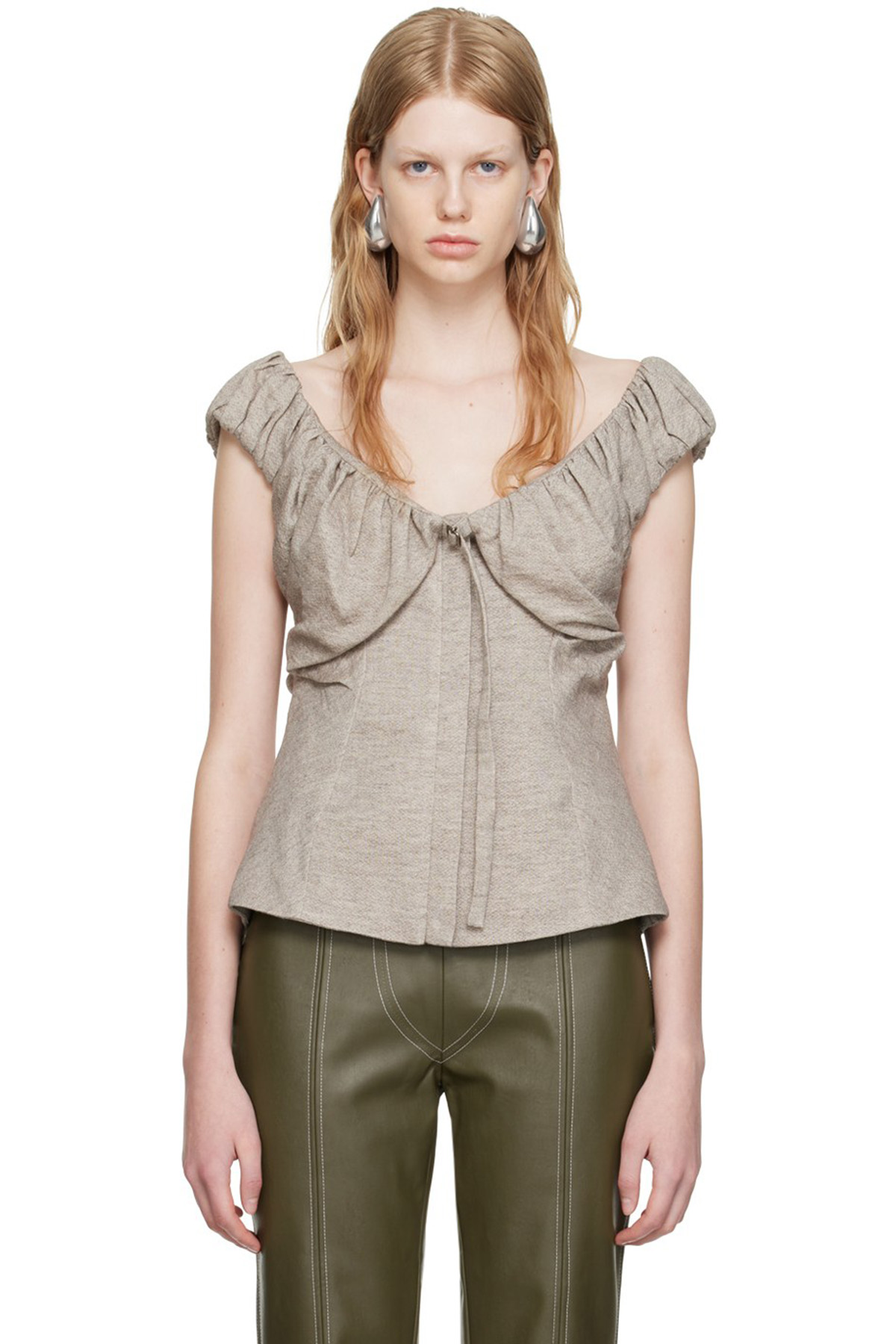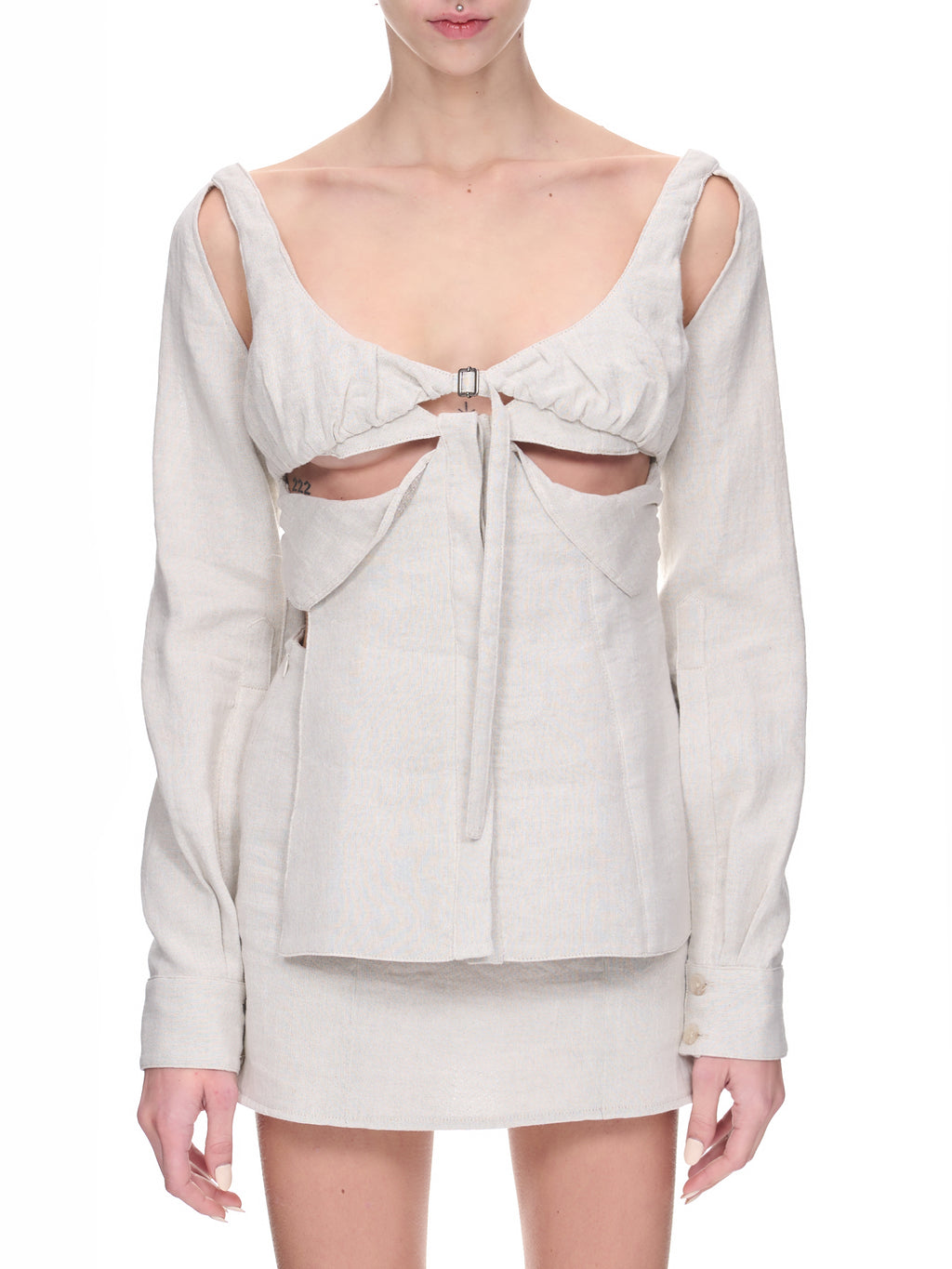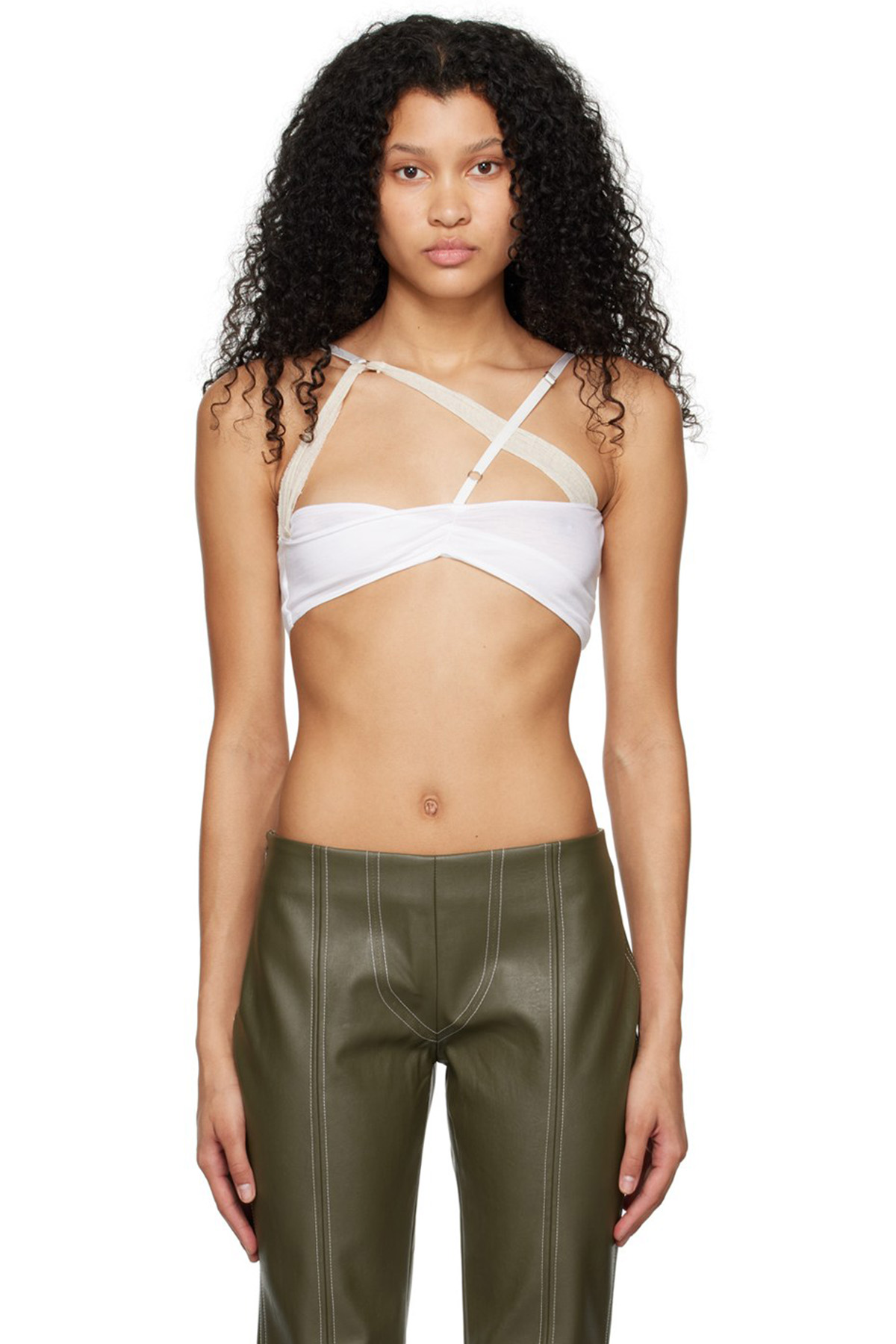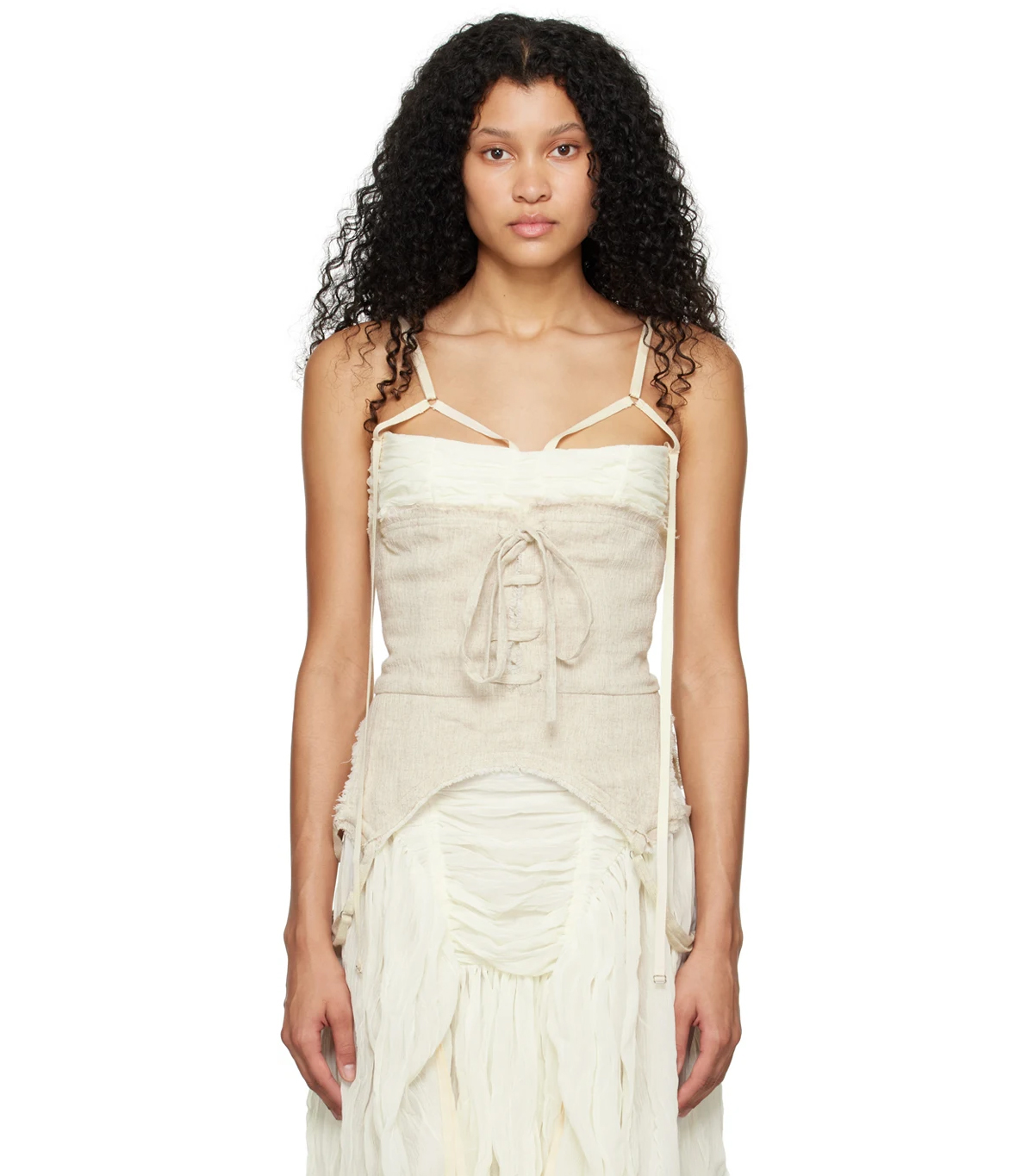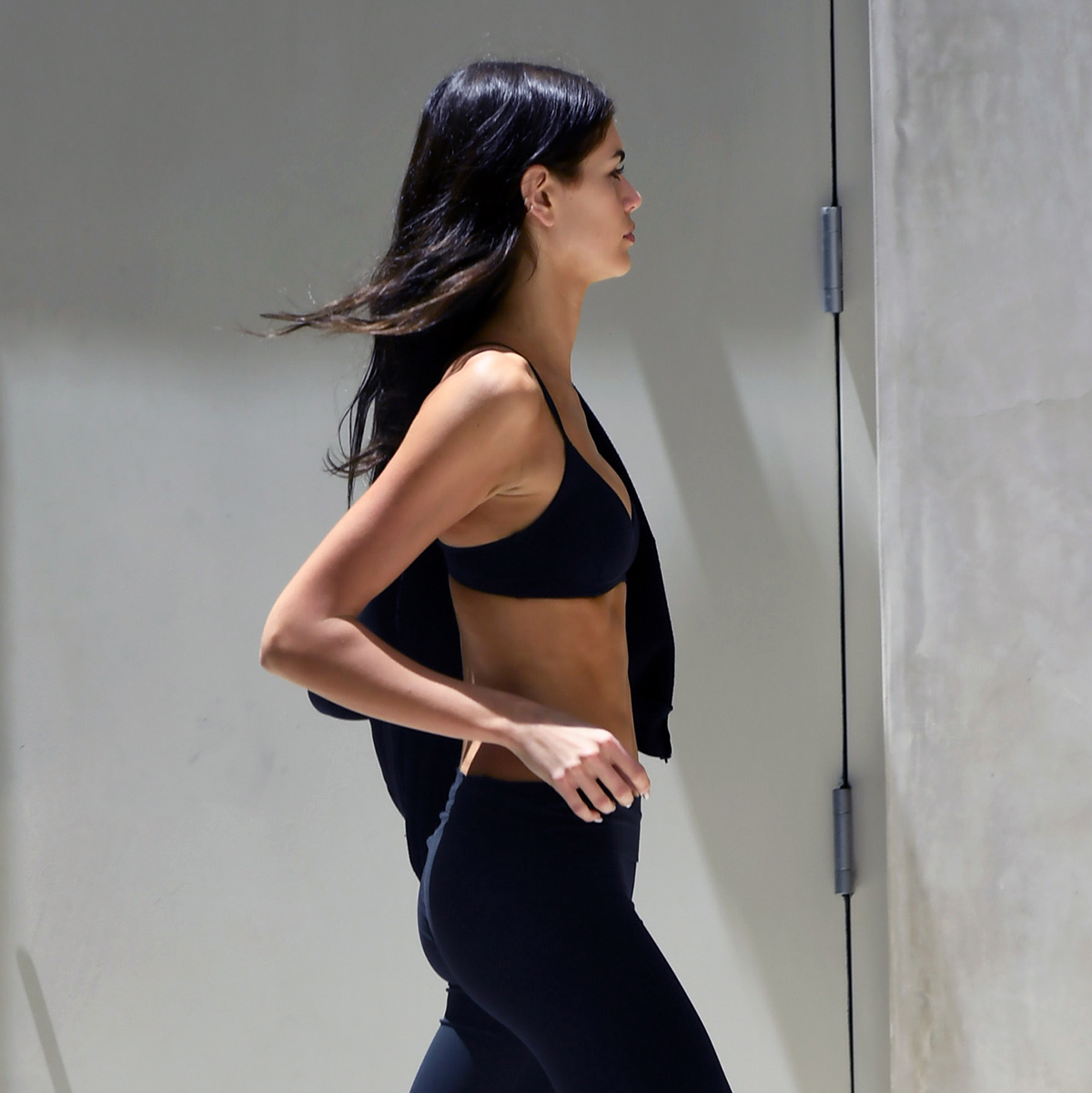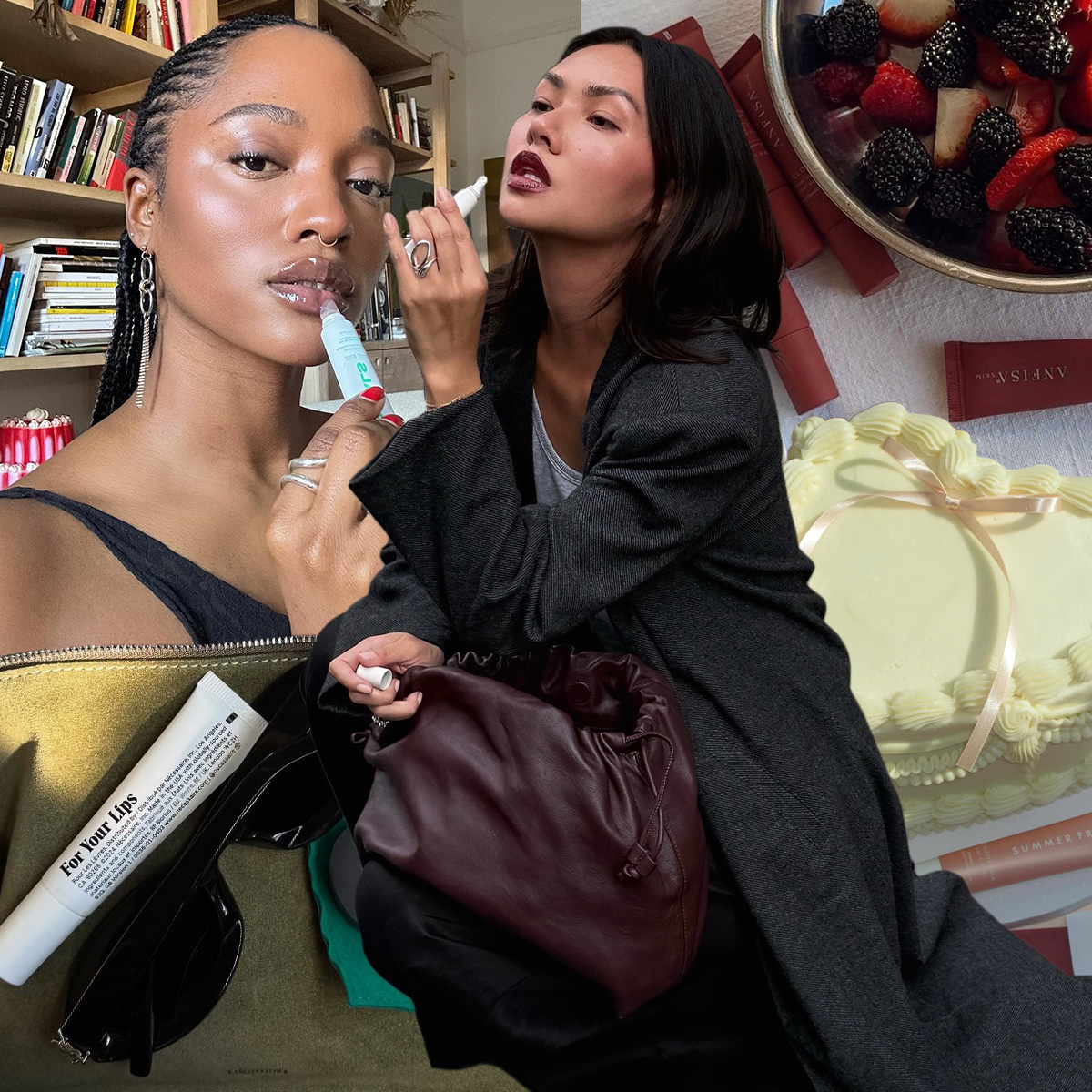Fashion Has a Plus-Size Problem—These 7 Designers Are Here to Change That

Fashion month has just wrapped up, and while the clothing on the runways looked more beautiful than ever before, there was still one impossible-to-miss blemish that even the most stunning collections failed to obscure: a diversity of body shapes. If you noticed a sharp decline in the number of plus-size models on the recent runways, then you're certainly not alone. After what has seemed like several years of promising change towards a more inclusive future, the industry seemed to snap right back to its problematic past—and it needs to be addressed.
In its fall/winter 2024 collections survey, Vogue Business reported that of the more than 8000 looks across 230 New York, Milan, London, and Paris shows, just a mere 0.8% featured plus sizes 14 and above. And it wasn't much better for midsizes, either, at just 3.7% representation. Journalists from across the industry pointed out the glaring lack of size diversity, too. New York Times fashion critic Vanessa Friedman notoriously aired her dismay at the way the clothes were nearly falling off of one model at the show of a high-profile New York brand. Meanwhile, Gen Zers are doubling down on their obsession with the trends of the early 2000s and Hollywood can't stop glamorizing controversial weight-loss drugs like Ozempic. In 2023, we've come so far, and yet in this moment, it feels like any past progress was simply a well-crafted facade.
Despite the troubling pivot, not everyone abandoned inclusivity. In fact, for several young and emerging designers, reflecting the world we live in has never been a trend—it's intrinsically a part of their DNA. Seven young talents from New York to Paris are completely obliterating the status quo with runways that brim with all manner of plus-size women, mature women, trans women, disabled women, and beyond. What's more, these designers aren't afraid of putting risqué cutouts, miniature hemlines, and sheer fabrics on bigger bodies—a loud proclamation that anyone can wear these more daring looks.
The seven names you're about to discover are setting the bar for what inclusivity can (and should) look like. Not only did they have the highest percentage of plus-size models in their collections, but they proved something more established luxury brands have always been scared of, that clothing looks so damn good on fuller figures.
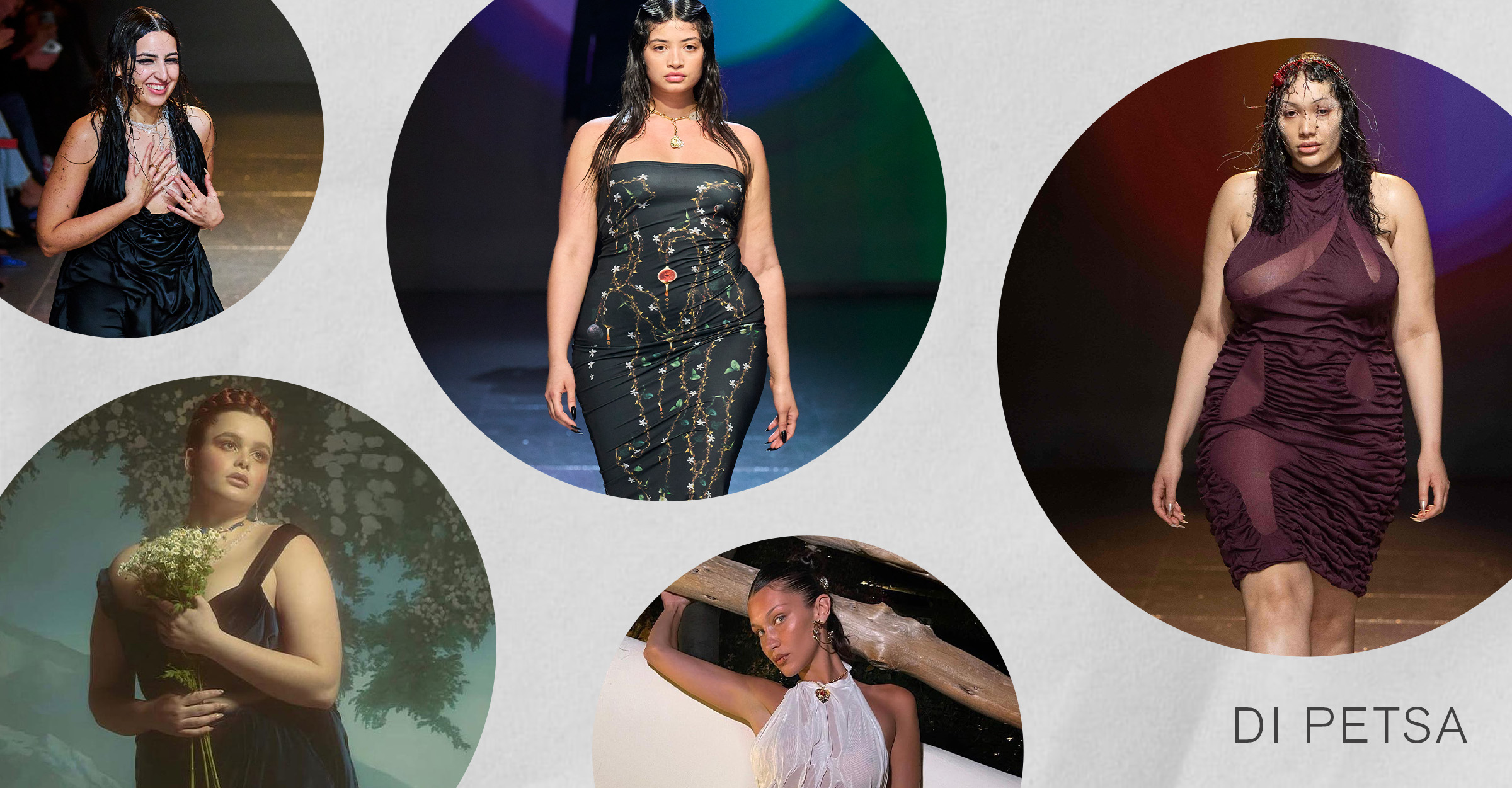
Greek designer Dimitra Petsa’s namesake label Di Petsa is quite literally a celebration of the female form. Her signature wet-look dresses combine layers of sheer mesh fabric that carefully cling and drape to create the effect of water rippling across the body. According to the designer, it's a symbol of self-acceptance and homage to our fluid, natural state of being. To me, they're reminiscent of the sensuality of a Greek goddess statue, and indeed Petsa has mentioned that Botticelli's Birth of Venus is a design reference for her. With such emphasis our natural human forms in all their glory, it makes sense that the designer's vision extends to her runways where models across the gender, age, and size spectrum (including one pregnant model) showcased the F/W 24 collection.
The impossible-to-replicate dresses have racked up a lengthy roster of celebrity fans including Bella Hadid, Ciara, Kylie Jenner, FKA Twigs, and Barbie Ferreira, the latter of whom wore a blue velvet look from the brand in our February 2022 cover shoot.
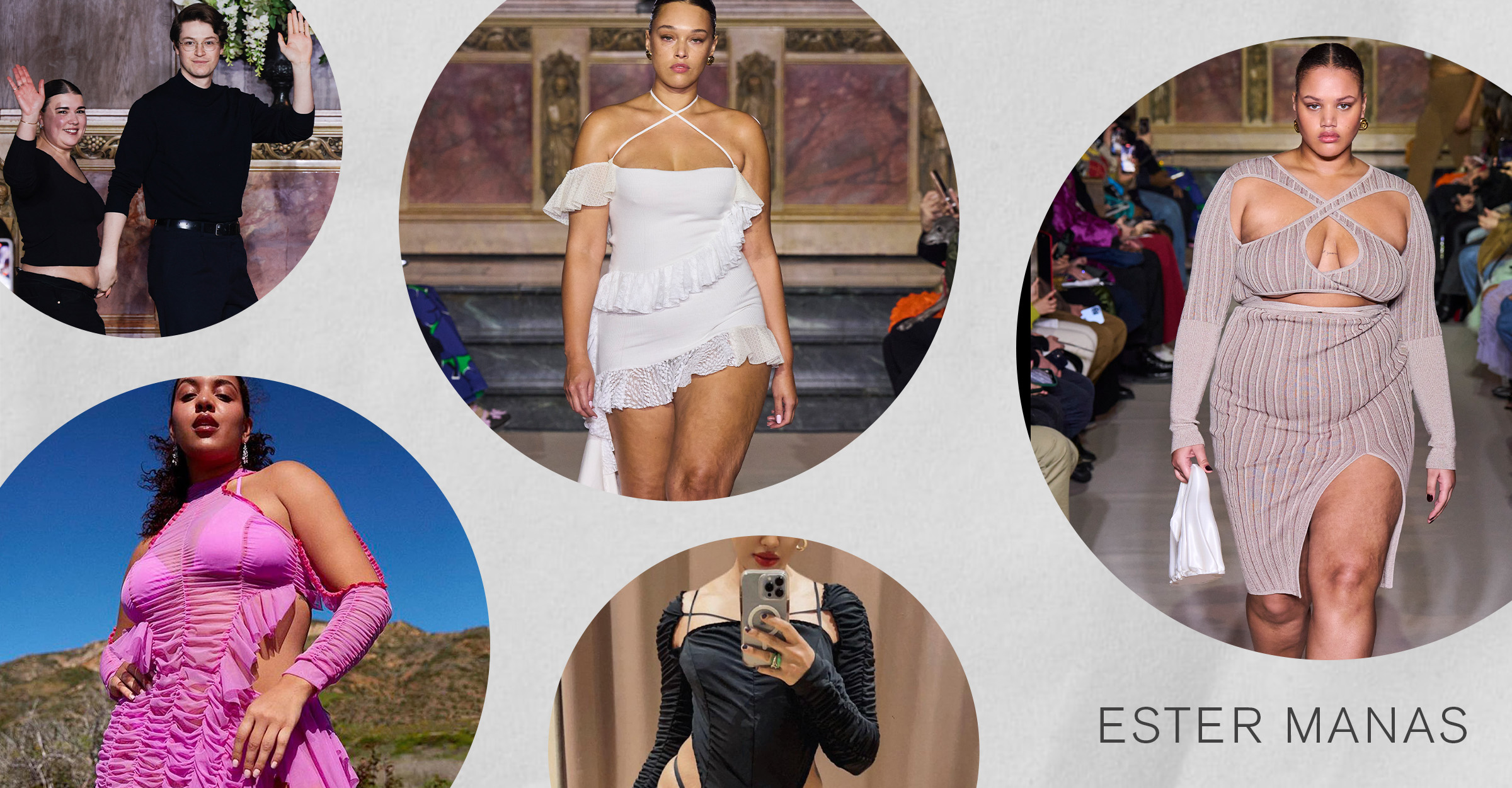
Historically, when runways do feature one or two plus-size models, they're almost always wearing a plainer and more conservative look than any of the other straight-size models. At the Belgium-based label Ester Manas, women of all shapes and sizes can find a reprieve from archaic fashion "rules" about what one can and can't wear.
Designers Ester Manas and Balthazar Delepierre are obliterating that so-called status quo with their progressive vision of an innovative, one-size-fits-all wardrobe. Slinky tops, dresses, and skirts feature all-over ruching, hip-flashing cutouts, box pleats, and carefully placed drawstrings to allow the garment to fit a wide range of figures. And as eco-friendly as they are adaptive, pieces are crafted from predominantly deadstock and upcycled fabrics bringing both sustainability and inclusivity into its eye-catching, sultry aesthetic.
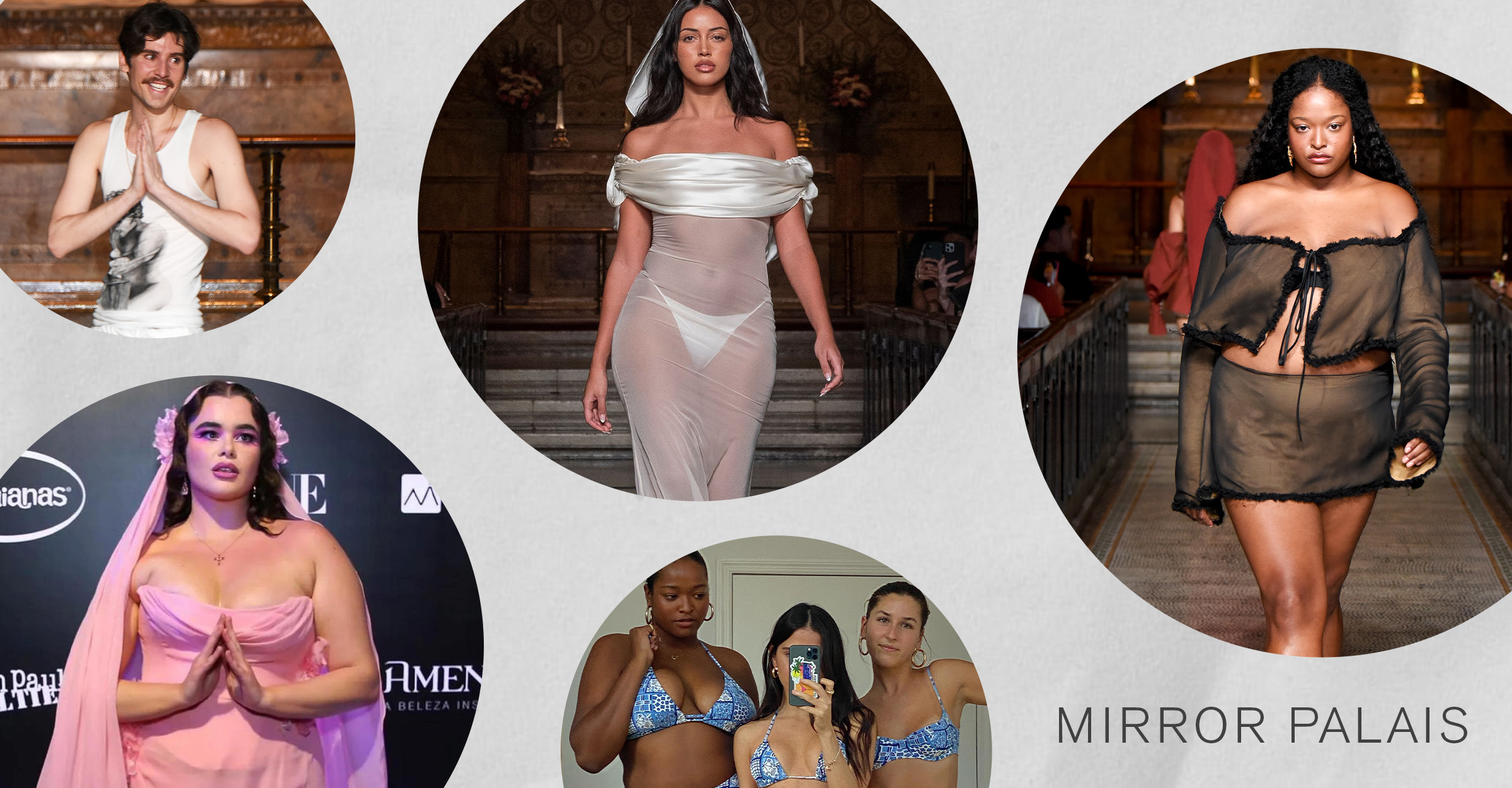
One major barrier to entry with expanding size ranges is the cost and resources it takes to do so. And yet as soon as New York designer Marcelo Gaia was able to financially support the design and production of more sizes, he didn't hesitate. The impact was instantaneous, and his brand Mirror Palais has since become a viral internet sensation known for its sultry silhouettes and vintage-inspired appeal.
It's hard to pinpoint just one piece that has earned Gaia and his brand the most acclaim. Was it the shimmery fairy-like dress that exploded through social media? The brand's bare-midriff cutout dress that Kylie Jenner notoriously wore during a pregnancy photoshoot? Or one of the many colorful '80s style bikinis that the brand makes up to size 2XL?
Regardless of the exact item, the success of Mirror Palais lies in the way it speaks to a generation driven by the romanticism of nostalgia while reimagining the styles of the past in a size range that many more people can (finally) participate in.
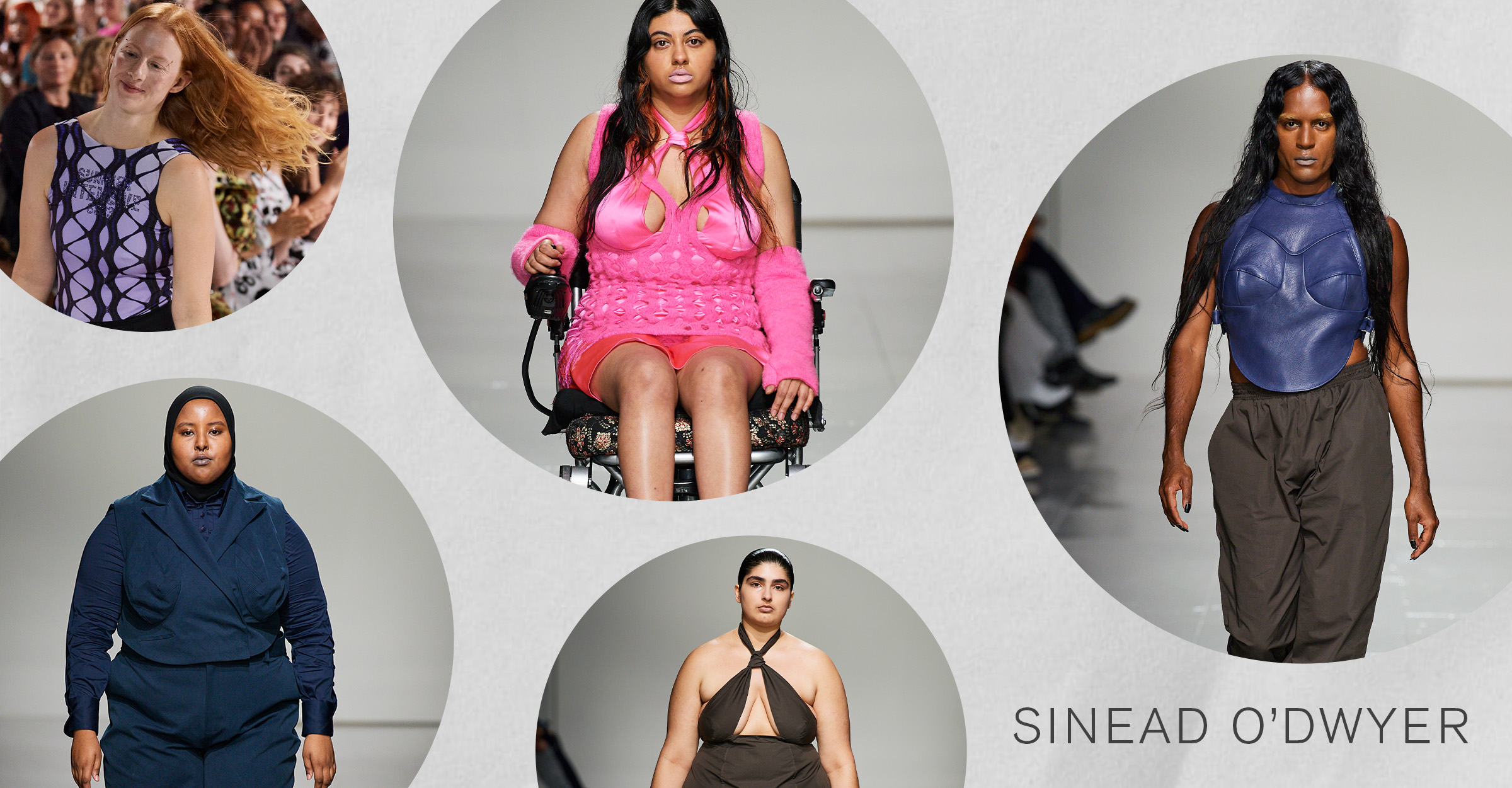
If you're looking for a pitch-perfect example of what diversity in the fashion industry should look like in 2024, just take a peek at Sinéad O'Dwyer's fall/winter show for the new blueprint.
"The core of our brand ethos is a commitment to designing and creating luxury fashion for all bodies. We also prioritize craft and innovation and the sustainability and quality of our materials," O'Dwyer tells Who What Wear. The London-based Irish designer started this mission during her time studying at the Royal College of Art, and her latest collection is a fantastic example of how you take a more considered approach from start to finish, ensuring that you include different body types and abilities ahead of designing the final result. The garment begins with the person.
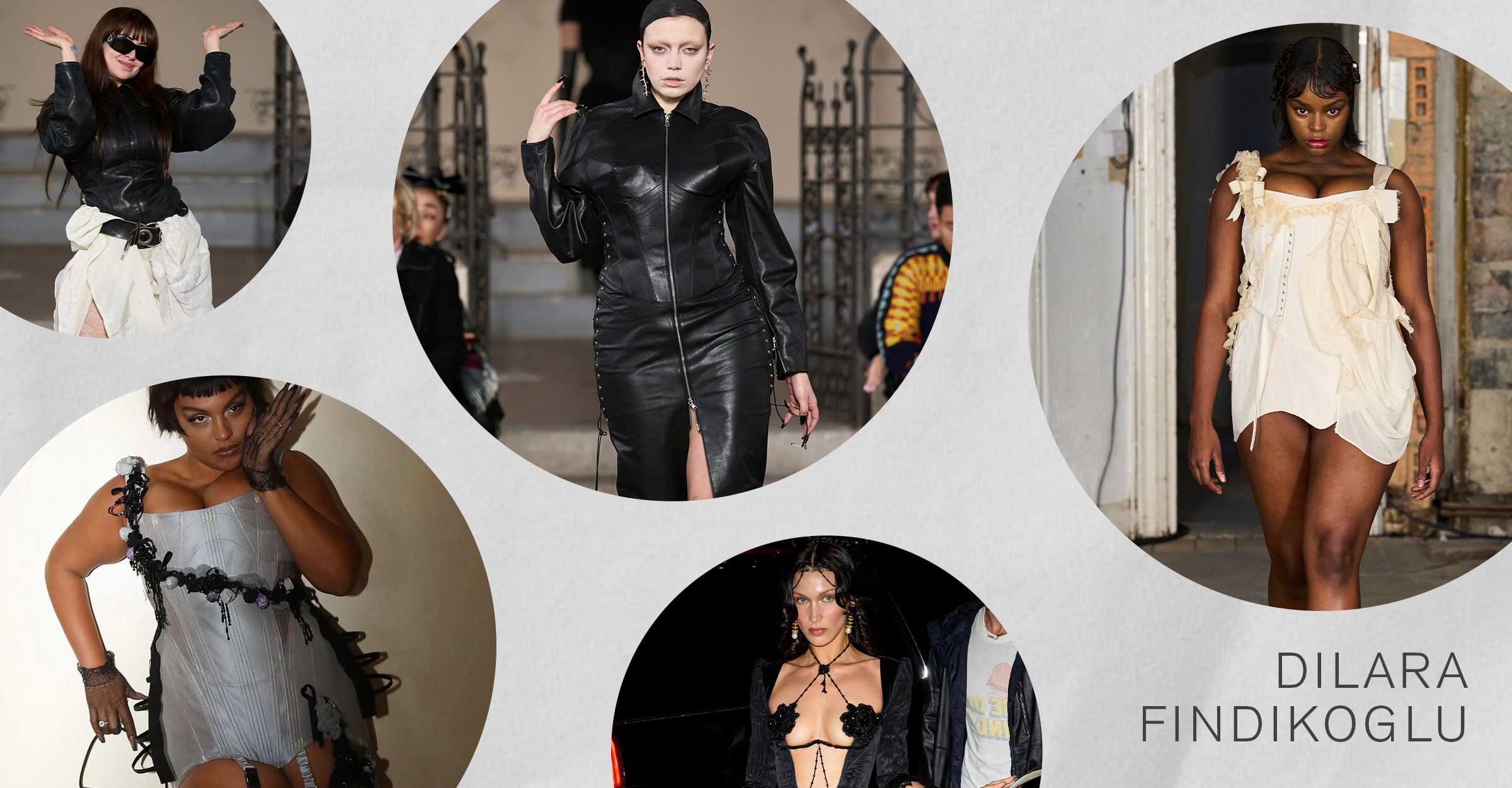
It's hard to pinpoint which of Turkish British fashion designer Dilara Findikoglu's many signature pieces is best at summing her up. Is it the pearl initial necklaces that have swept through Instagram? The perfect-fit corsets that have inspired a comeback across the board? The skimpy swimwear loved by celebrities? The gothic lace dresses? Perhaps you'll know her as the creator of Bella Hadid's risqué custom-made after-party look for the Met Gala last year. With its floral nipple pasties, mini bustle, and barely there lace skirt, this is an ensemble that will remain in the history books.
Findikoglu's romantic yet iconoclastic spin on Victoriana and various subcultures puts her in a unique lane, appealing to many different personal styles. Inspired by politics, culture, society, her antique clothing archives, and much, much more, every Findikoglu piece is steeped in meaning. Her ascension has been "nothing short of meteoric," according to the LVMH Prize panel that shortlisted her in 2017. I agree.
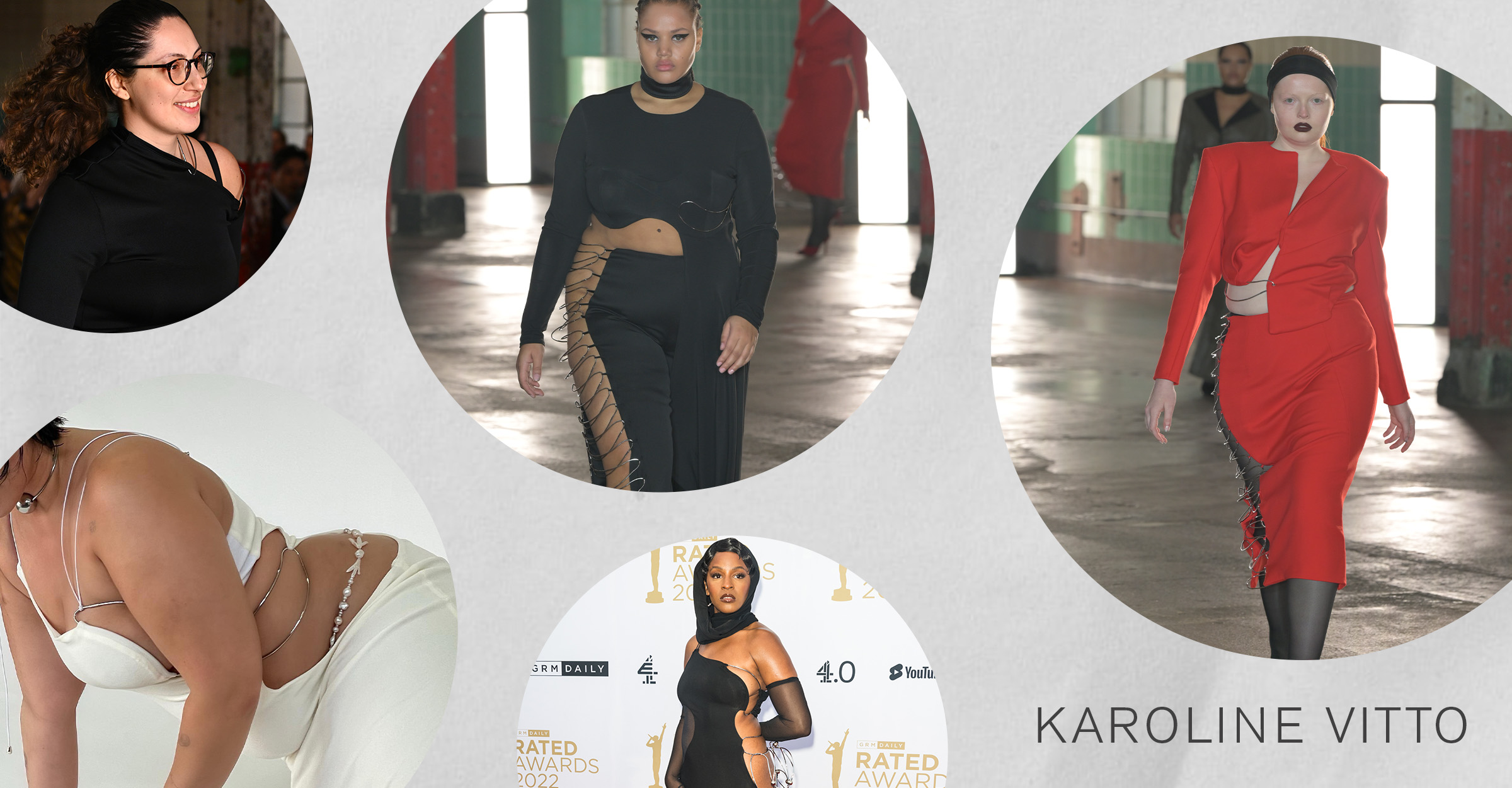
London-based designer Karoline Vitto caught our attention right off the bat. Not only are her garments works of art in their own right, but the label is also setting the precedent that skimpy silhouettes and sultry cutouts are suitable for any body shape. "I grew up in the '90s and 2000s when we all felt like we needed to look a certain way to be able to wear something," explains the designer, who casts a nearly exclusive plus-size lineup of models for her runway collections.
Vitto's goal is for more people to simply feel seen and like they're a part of the conversation, something that you'll come to recognize in the shapes and silhouettes of her work. Most notable are her cutout pieces featuring curved, organic-shaped metal hardware that mimics and frames the curves of its wearer when placed on the hip of a skirt or the bust of a top. The effect is one that's equal parts sophisticated and "sexy." It's body-con, but this time for everyone.
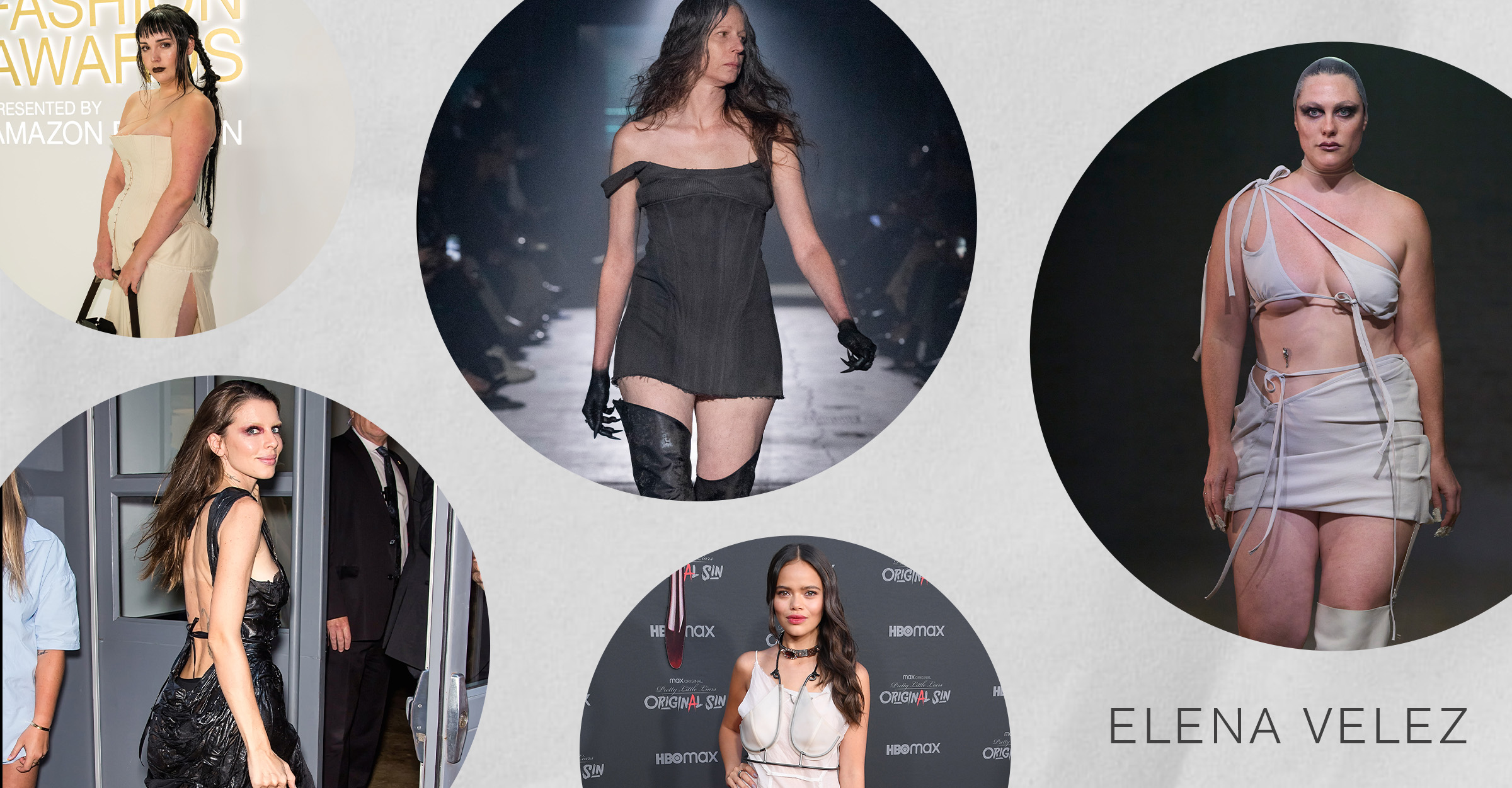
For the CFDA award–winning artist and designer Elena Velez, each piece is a study in carefully balanced proportion and form. Gathering, asymmetrical lines, and integrated corsetry are all style signatures you'll find mimicked across her collections and the silhouettes that emerge are at once stately and voluptuous. Textural and tactile, the brand’s dresses, skirts, jackets, and trousers are cut from sheer or drapey natural fibers and left conspicuously unfinished with raw edges. Launched in 2021 and based between Velez's native Milwaukee and New York, her eponymous label is an unlikely marriage of brazen femininity and coarse tailoring that blazes new trails for womenswear. Its casting is a particular delight. Models both curvy and thin and young and mature have walked in Velez's shows.
This story was published at an earlier date and has since been updated.
Anna is an NYC-based senior fashion editor who has been a member of the Who What Wear team for over seven years, having begun her career in L.A. at brands like Michael Kors and A.L.C. As an editor, she has earned a reputation for her coverage of breaking trends, emerging brands, luxury shopping curations, fashion features, and more. Anna has penned a number Who What Wear cover interviews, including Megan Fox, Julia Garner, and Lilly Collins. She also leads the site’s emerging travel vertical that highlights all things travel and lifestyle through a fashion-person lens.
